After a very delicious lunch in the centre of the Medina in Marrakech, followed by a nice break during which I rested, I continued exploring the old part of the city, but this time with very specific places I wanted to visit.
The first stop on my tour was the Bahia Palace, built in the second half of the 19th century as the residence of the then Moroccan Grand Vizier. At the end of that same century, the palace was expanded by his son, who was also a Grand Vizier.
Today, this is a popular destination for visitors, one of the most visited in the country, and it is located about 1 km from Jemaa el-Fnaa Square, which is only about a 15-minute walk through the streets of the Medina. The difference, however, in impressions, peace, heat level, and the amount of greenery is quite significant, and it’s easy to imagine how the former Grand Veziers enjoyed their home.
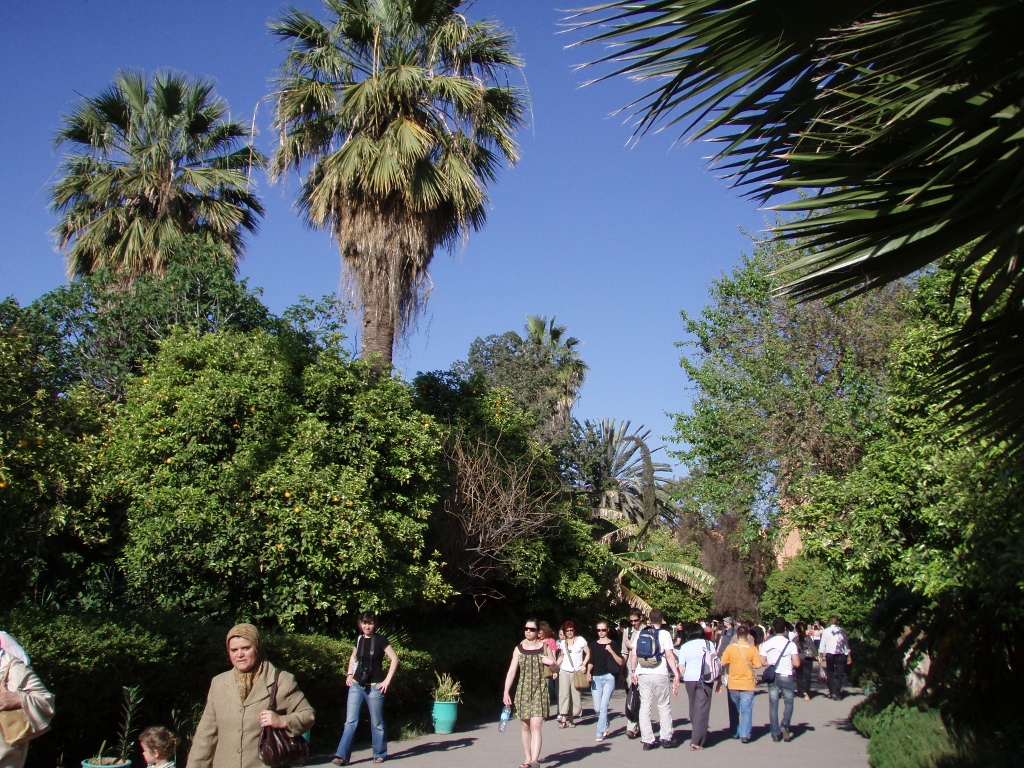 Bahia Palace, a detail
Bahia Palace, a detail
Marrakech is quite a popular tourist destination, so it’s no surprise that there were significantly more visitors here than at other places I had visited in Morocco so far.
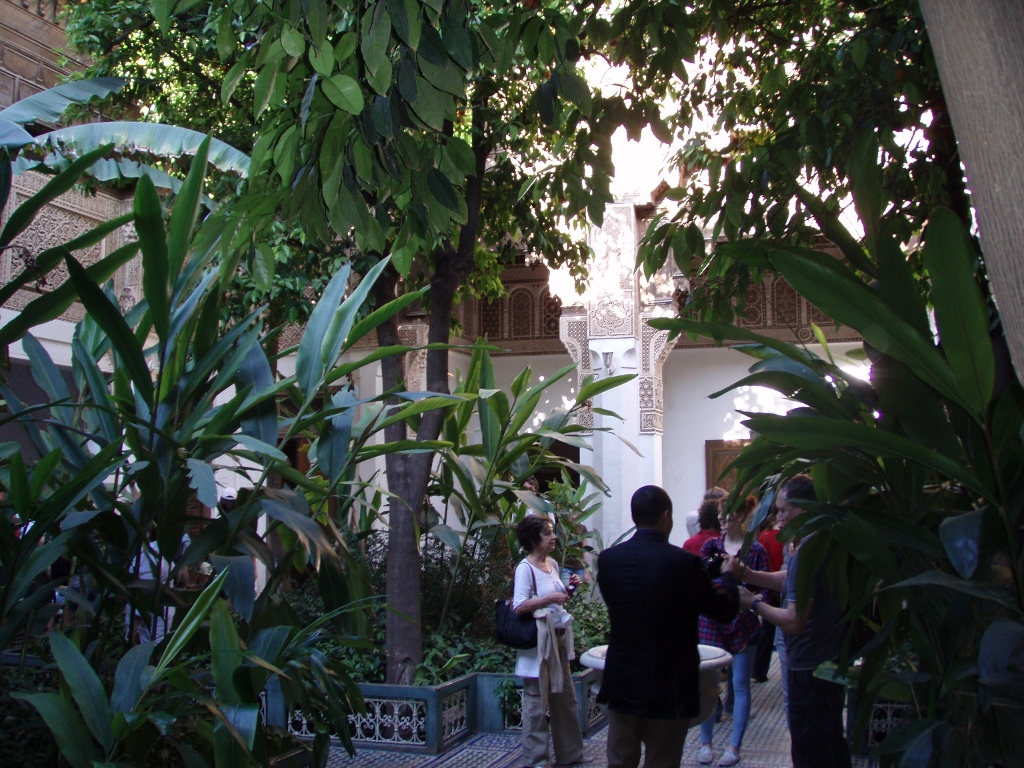 Bahia Palace, a detail
Bahia Palace, a detail
The palace is often “criticised” for consisting of seemingly separate and unconnected parts that at times resemble a true labyrinth, but from what I’ve read, this is partly the result of phased expansions and partly due to the need for privacy in Islamic architecture. The palace features a series of inner courtyards and gardens, as well as a great number of exceptionally beautiful details. The entire palace complex covers an area of nearly 2 hectares.
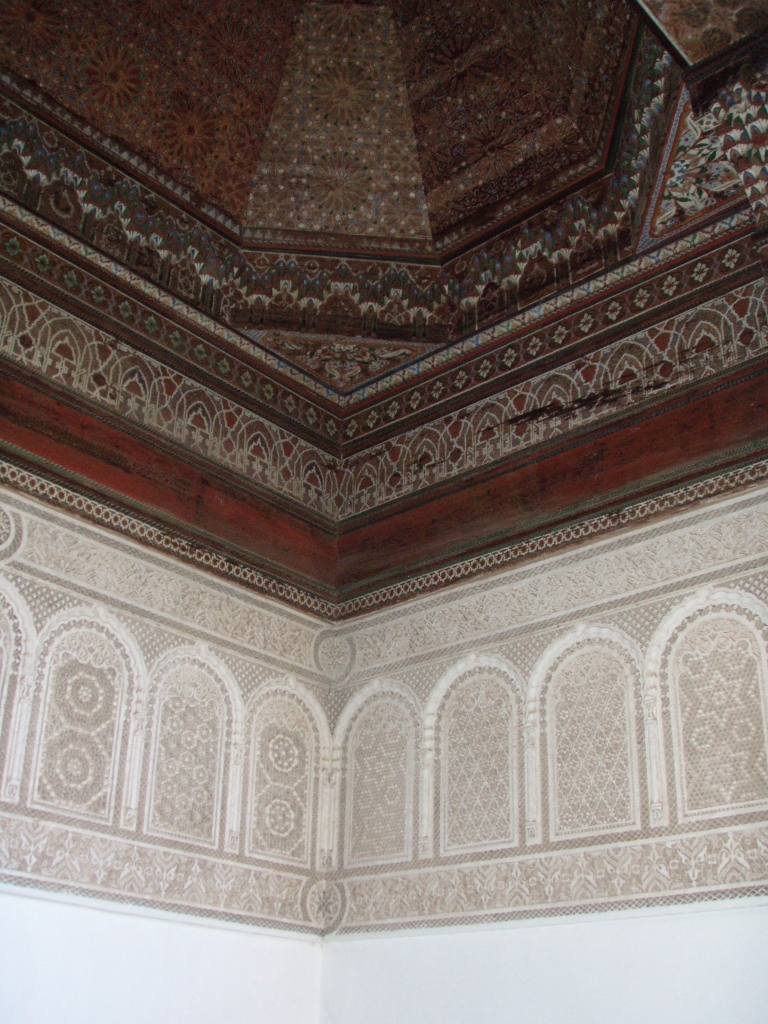 Bahia Palace, a detail
Bahia Palace, a detail
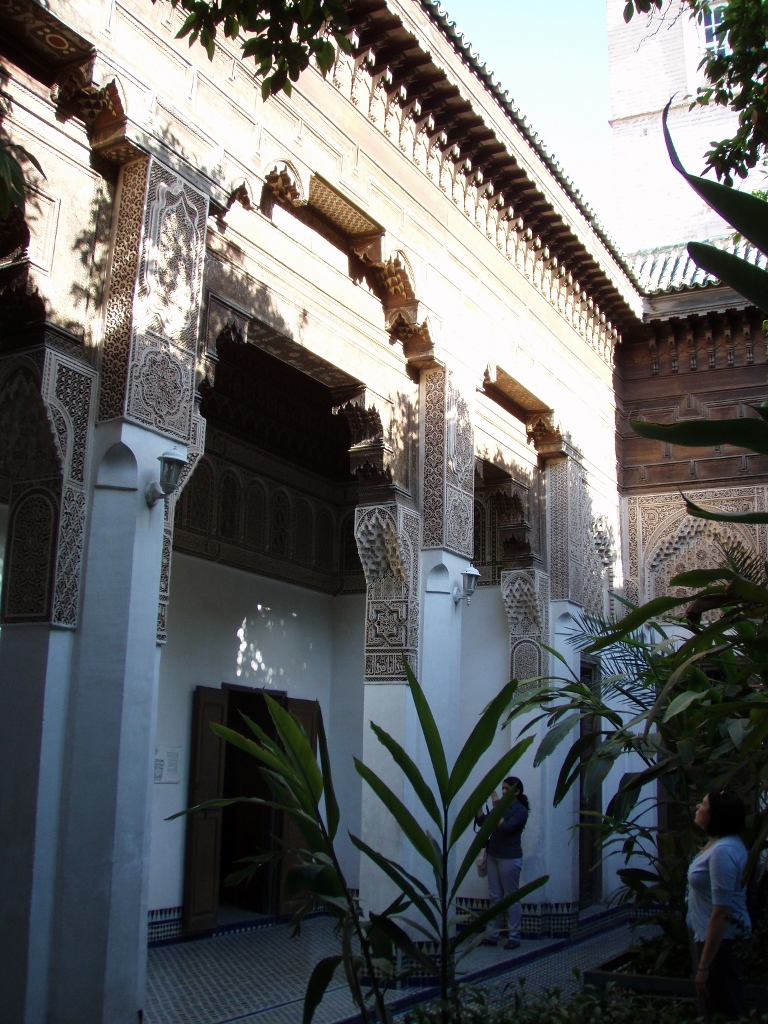 Bahia Palace, a detail
Bahia Palace, a detail
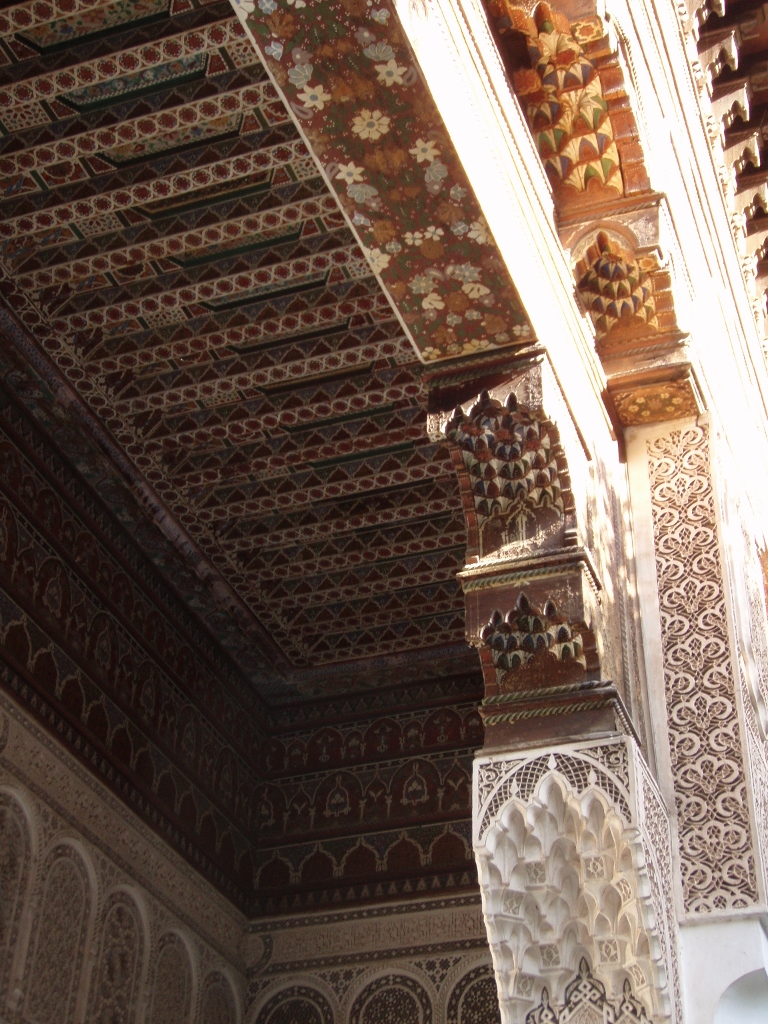 Bahia Palace, a detail
Bahia Palace, a detail
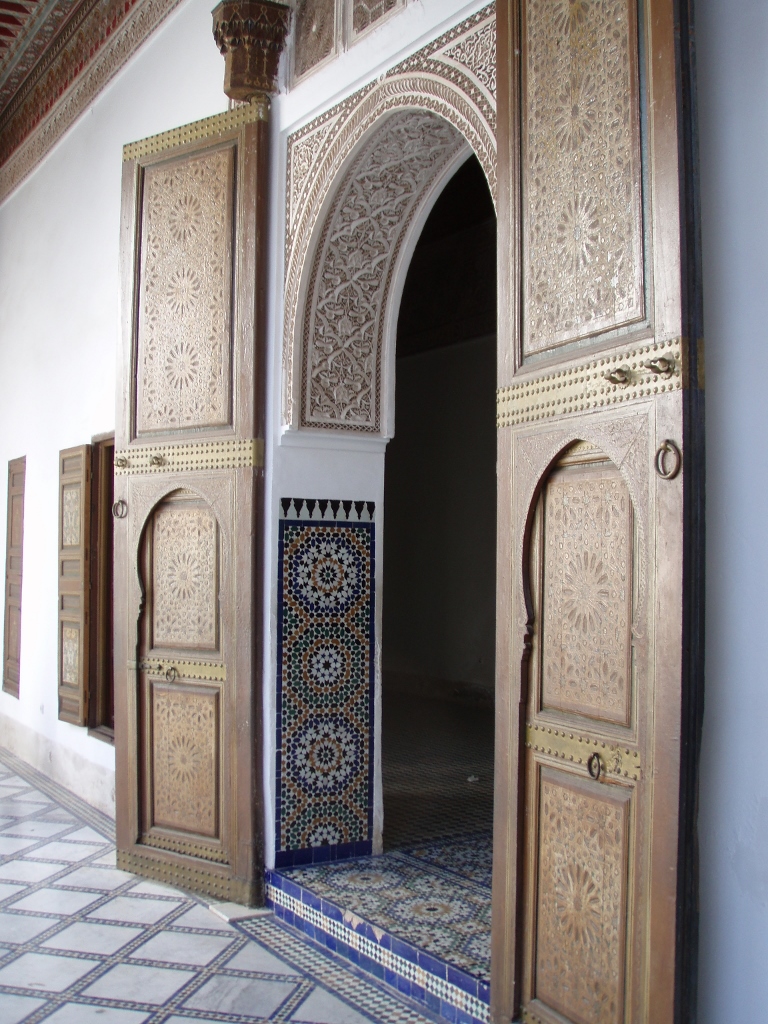 Bahia Palace, a detail
Bahia Palace, a detail
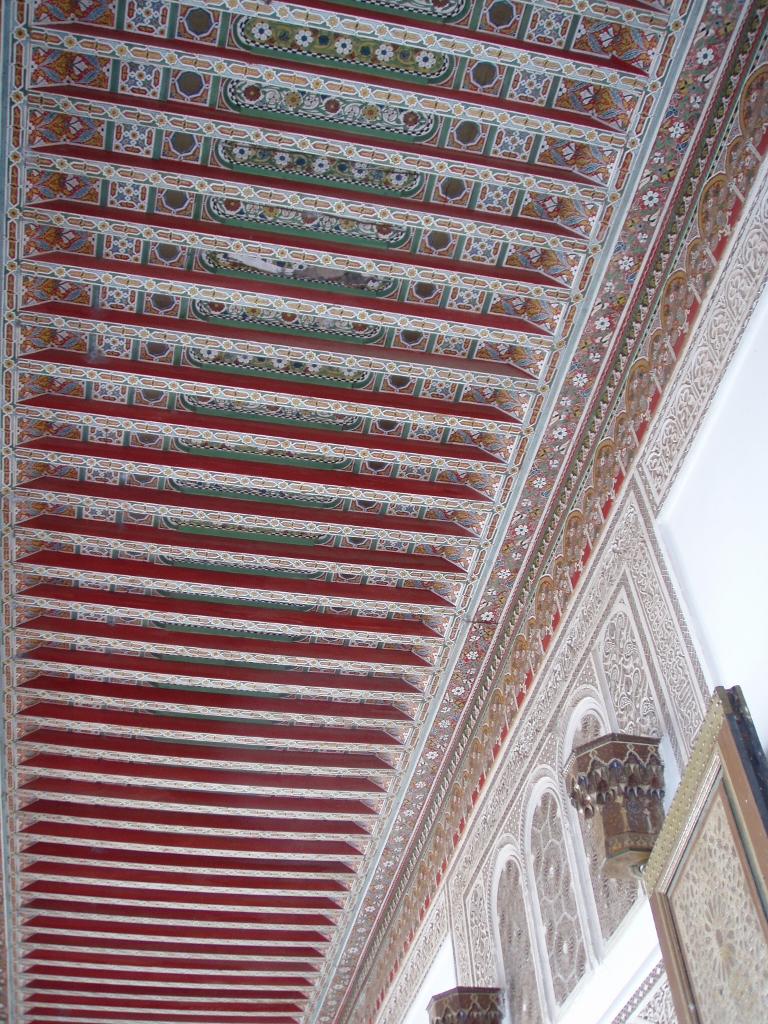 Bahia Palace, a detail
Bahia Palace, a detail
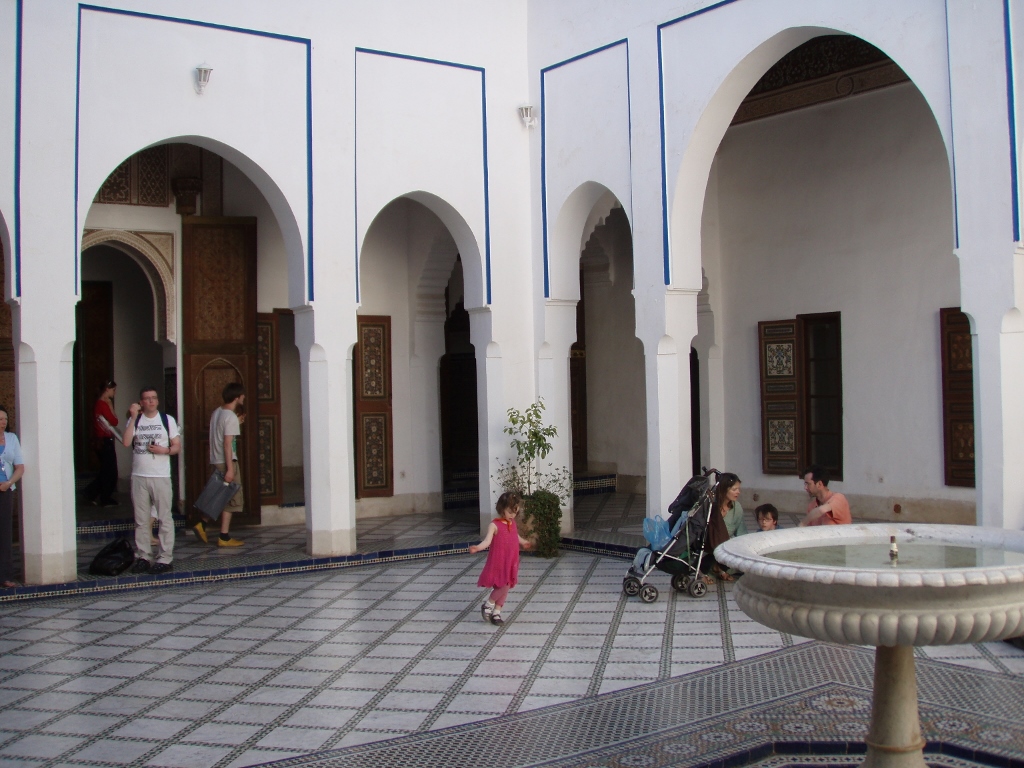 Bahia Palace, a detail
Bahia Palace, a detail
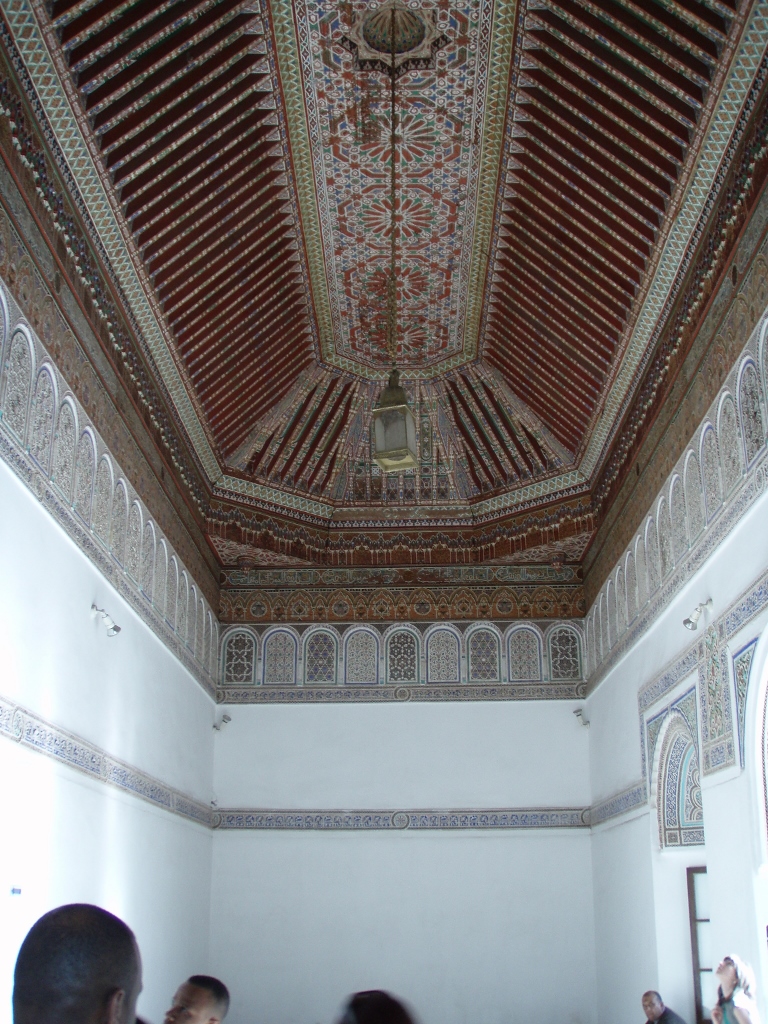 Bahia Palace, a detail
Bahia Palace, a detail
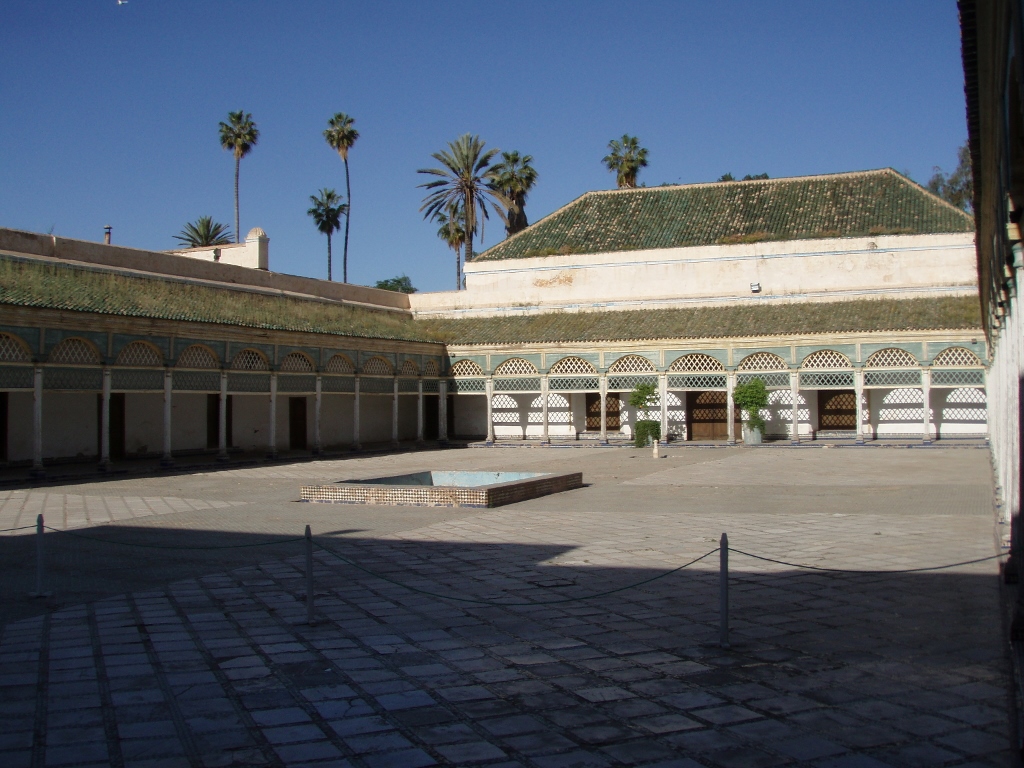 Bahia Palace, a detail
Bahia Palace, a detail
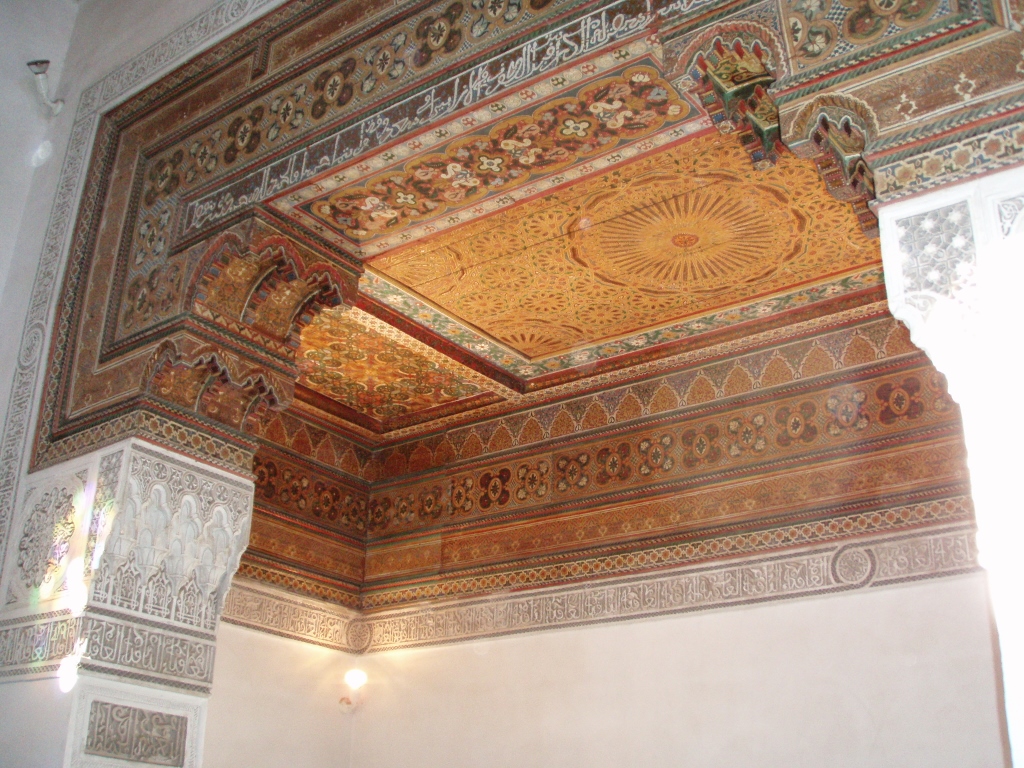 Bahia Palace, a detail
Bahia Palace, a detail
 Bahia Palace, a detail
Bahia Palace, a detail
About 500 m from this palace, there is another well-known palace – the El Badi Palace – although this one is in a considerably ruined state.
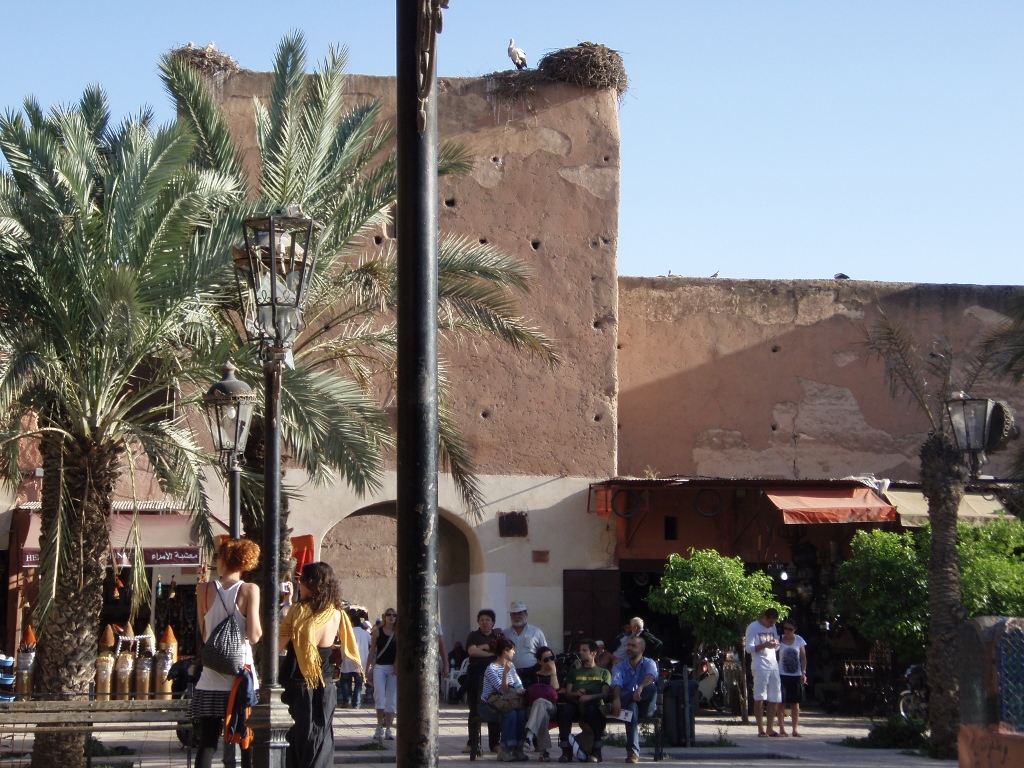 El Badi Palace, a detail
El Badi Palace, a detail
The Bahia Palace may be the most popular among foreign visitors, but the El Badi Palace is considered the most famous among the palaces in the royal city of Marrakech.
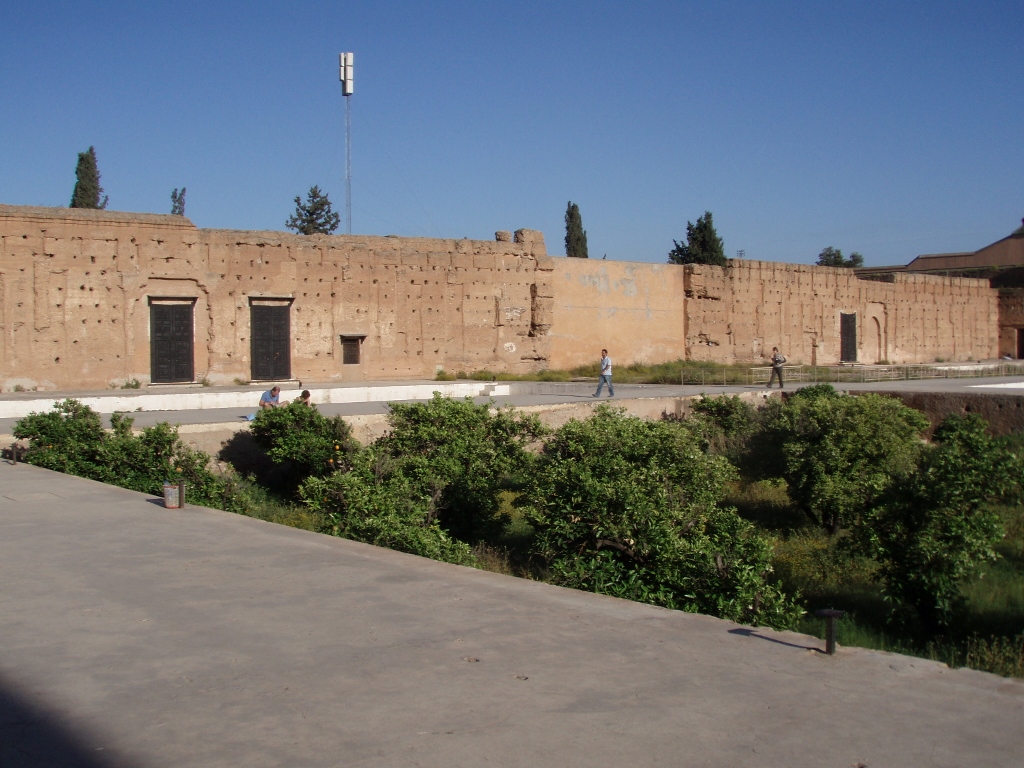 El Badi Palace, a detail
El Badi Palace, a detail
The palace was built between 1578 and 1602 by Sultan Ahmed al-Mansour (b/r. 1549/1578–1603) of the Saadi dynasty. At the time of its construction, it was reputed to be one of the most beautiful palaces in the world, while its name is often translated as “the Incomparable.”
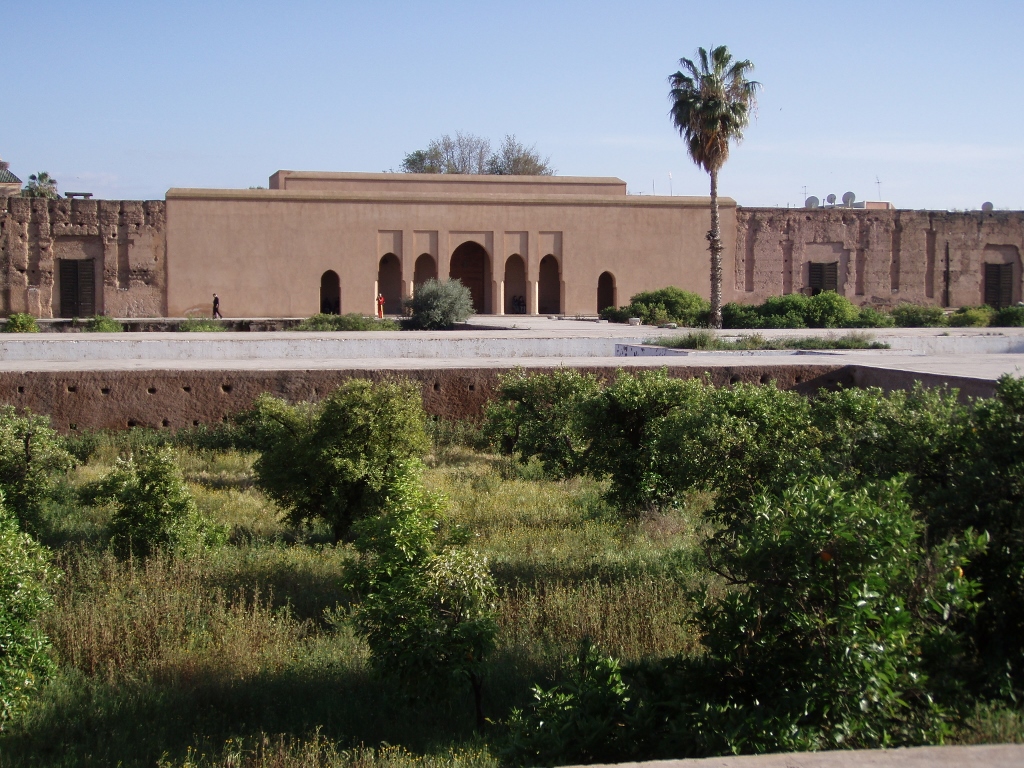 El Badi Palace, a detail
El Badi Palace, a detail
Materials for its construction were brought from Mali, Italy, and even India. Unfortunately, only ruins remain today, as Sultan Moulay Ismail Ibn Sharif (b/r. 1645/1672–1727) used materials from this palace to build his new capital – Meknes.
 El Badi Palace, a detail
El Badi Palace, a detail
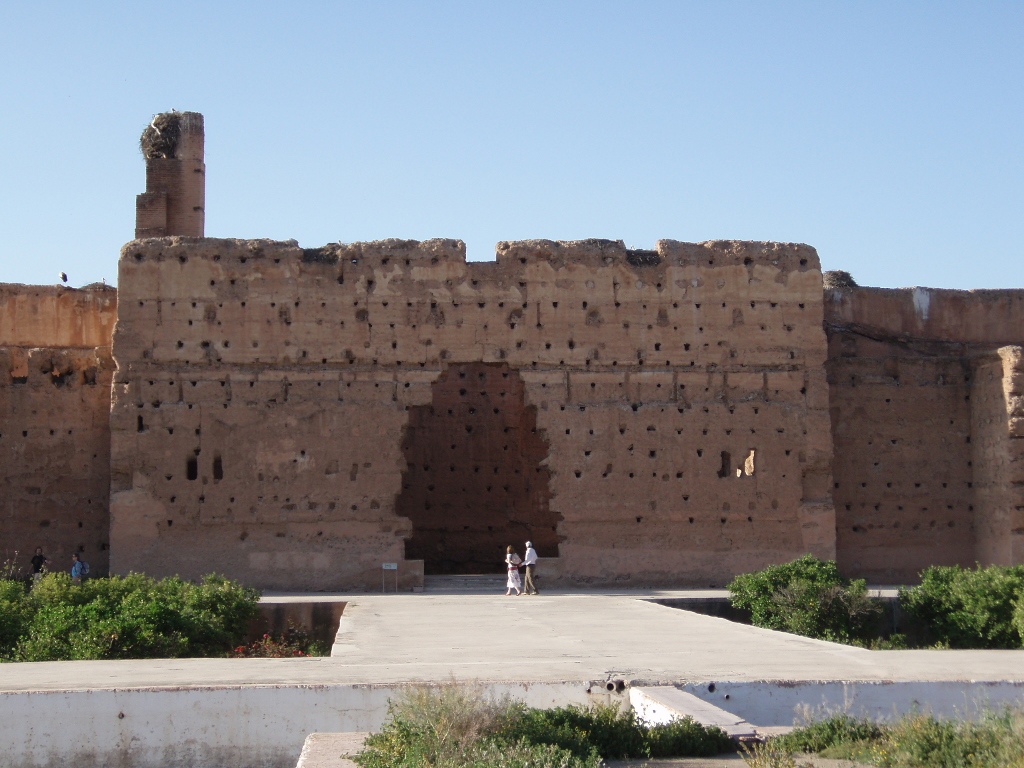 El Badi Palace, a detail
El Badi Palace, a detail
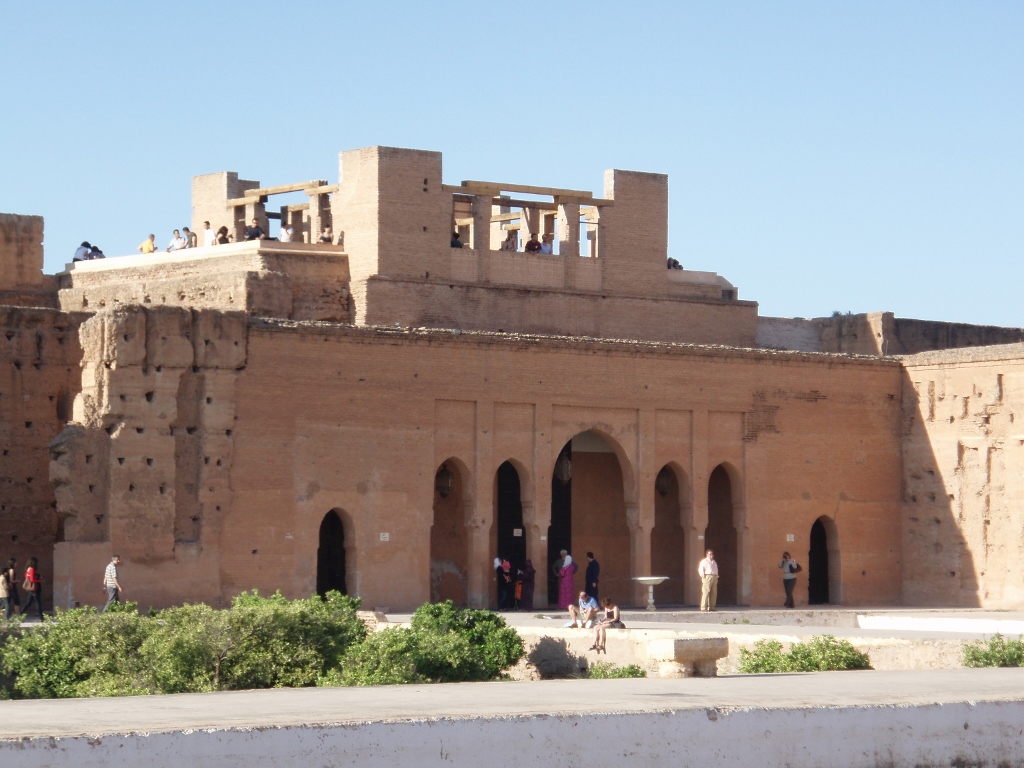 El Badi Palace, a detail
El Badi Palace, a detail
What can be seen today is a large square-base area with a central pool (which, during my visit, was dry) and four sunken sections where orange trees grow. Surrounding all of this are the remnants of walls and structures, which can be clearly seen in the following photo I took after climbing to the top of one of the buildings.
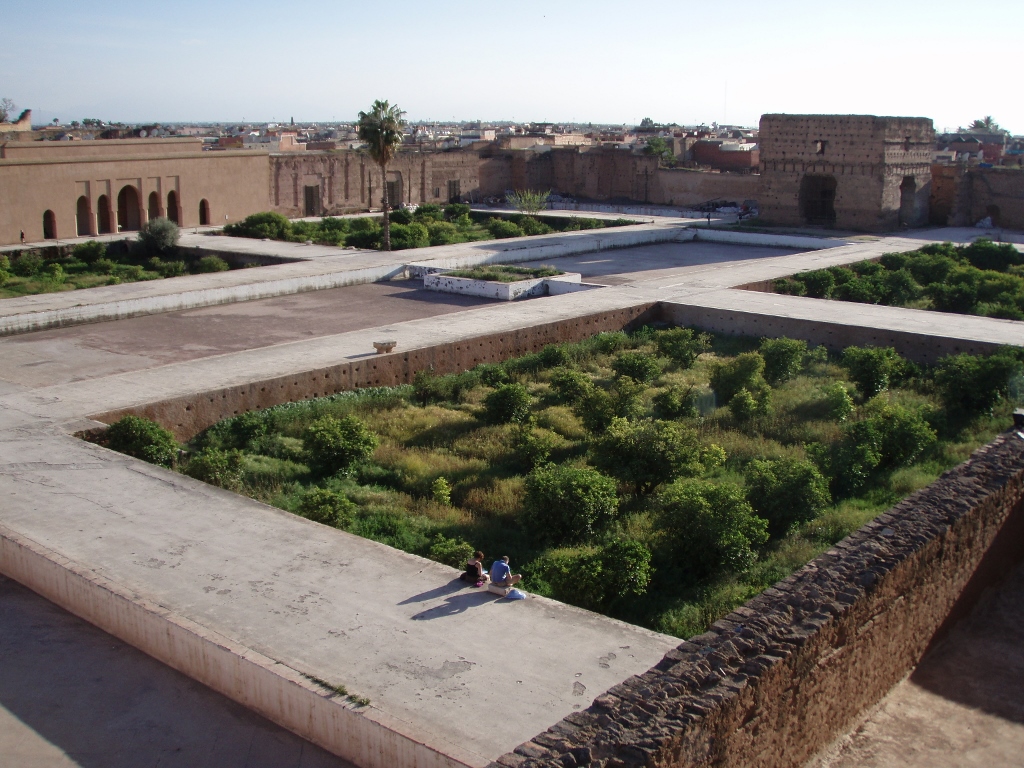
There are also underground ruined sections that can be explored, but I was more interested in what could be visited above ground. What I could see even better from above were the nests of numerous storks. I don’t think I’ve ever seen more storks in my life than here in Marrakech.
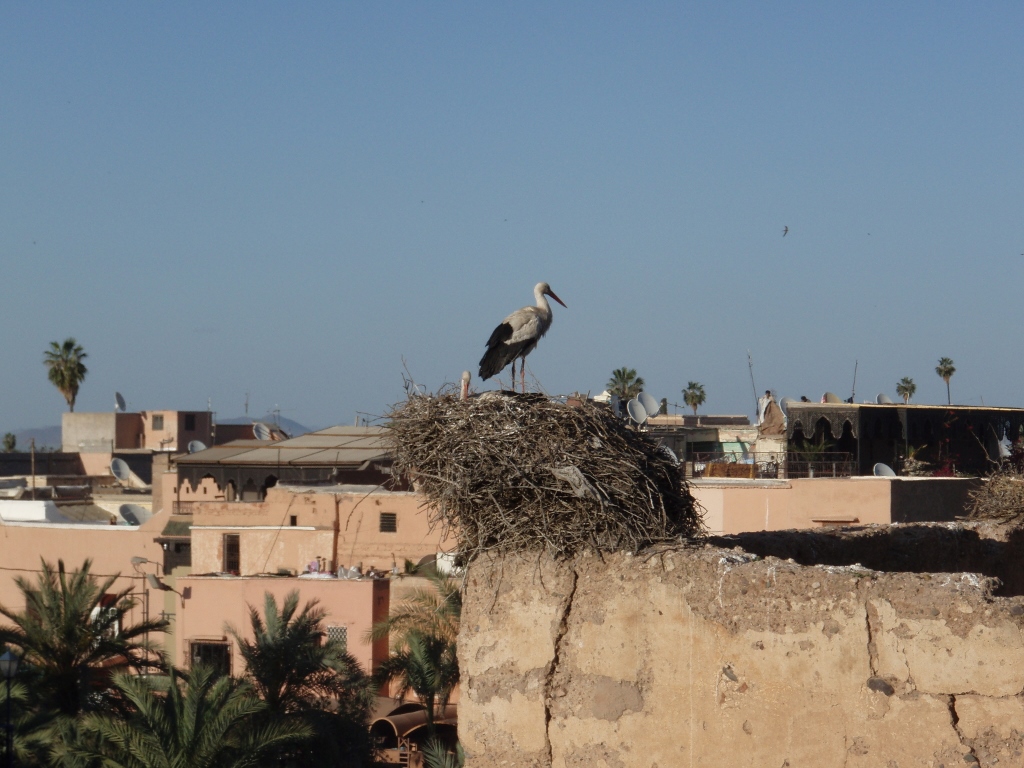 Marrakesh, a detail
Marrakesh, a detail
Even in the following photo, where I captured the surroundings of the palace, you can see storks and their nests on the walls (to the right), as well as on top of the minaret (to the left).
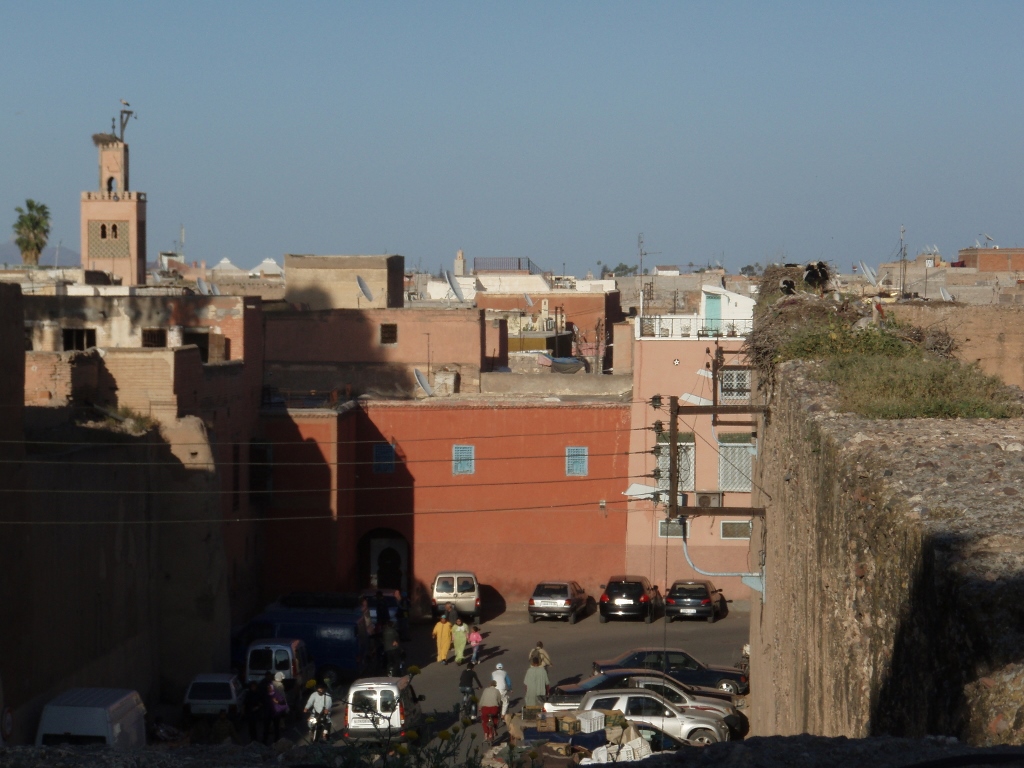 Marrakesh, a detail
Marrakesh, a detail
By the way, the El Badi Palace is located within the vast Kasbah, a citadel that lies within the Medina of Marrakech, south of Jemaa el-Fnaa Square.
In the immediate vicinity of the El Badi Palace is the modern royal palace, as Morocco is, after all, a kingdom, while the monarch has palaces in all major cities across the country.
I didn’t go there, of course, but I did walk to the nearby Moulay al-Yazid Mosque, also known as the Kasbah Mosque. As a non-Muslim, I wasn’t allowed to enter, but I observed it for a bit and took some photos from the outside.
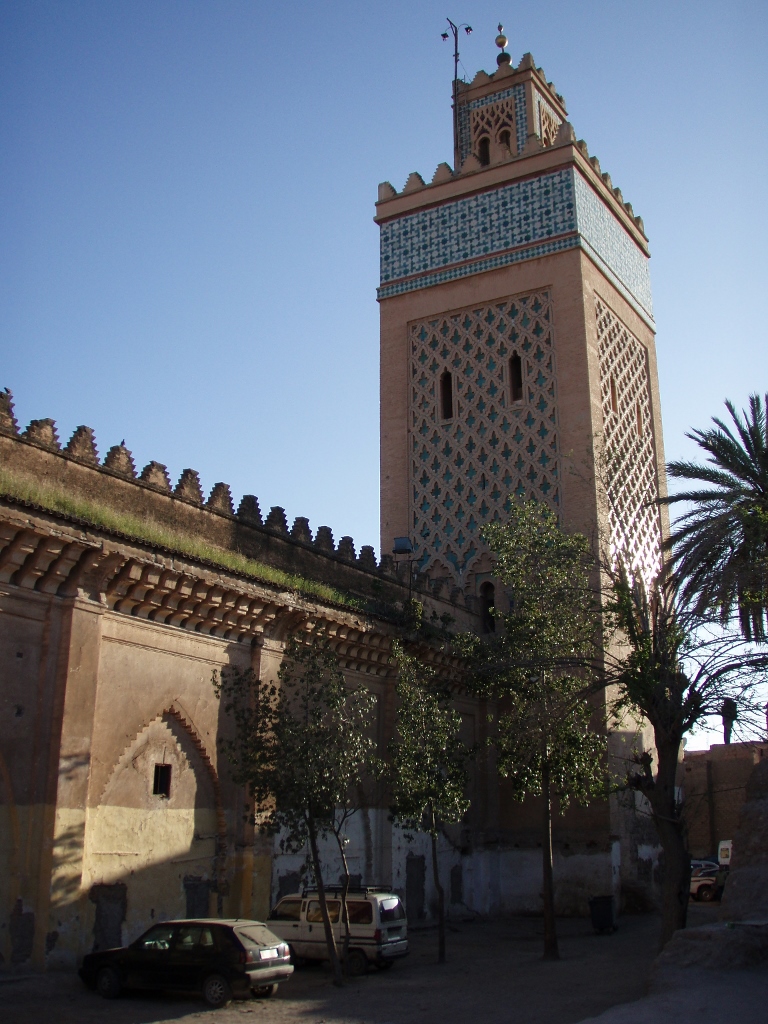 Marrakesh, a detail
Marrakesh, a detail
By the way, all of these sites I’m mentioning now are located within the large Kasbah in Marrakech. This also explains the common name for this mosque, which was originally built in the second half of the 12th century. Along with the Koutoubia Mosque, which I mentioned in the previous part of my travel stories from my travel around Morocco in 2010, it is one of the most important historic mosques in Marrakech.
Still, despite the importance of this mosque, not all of its sections are always in excellent condition. On the other hand, judging by some photos I’ve seen online, I believe the condition of the mosque’s outer walls has improved in recent years.
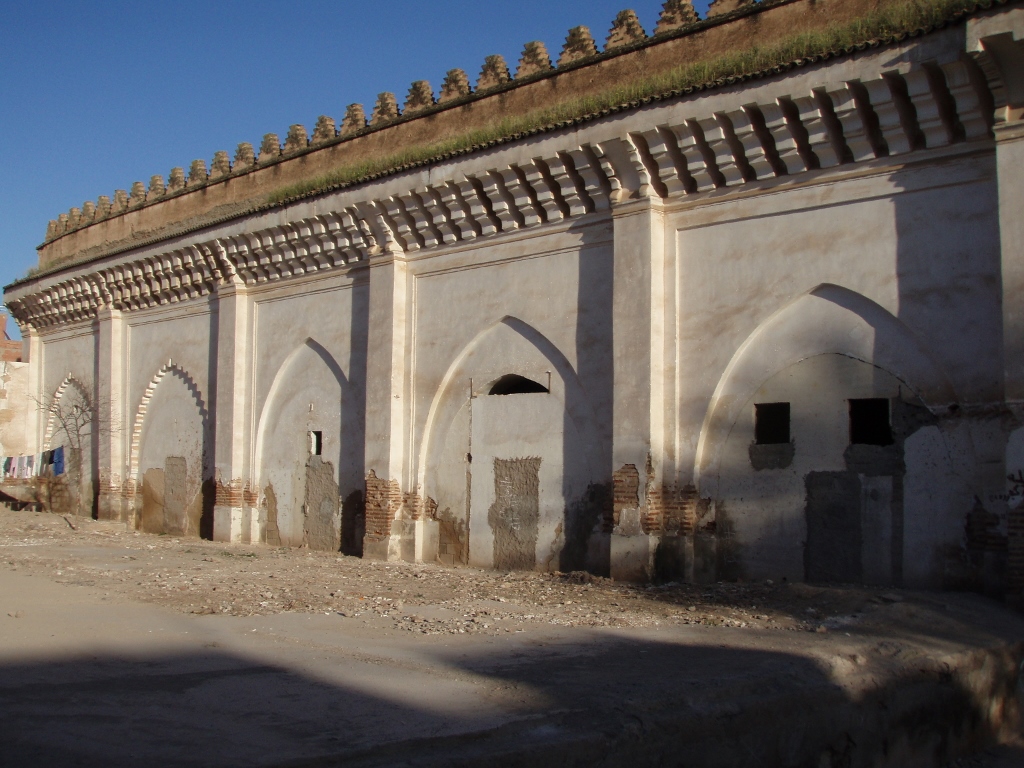 Marrakesh, a detail
Marrakesh, a detail
The main reason I even passed by this mosque is that right next to it is an exceptionally fascinating site that ultimately left the strongest impression on me. It’s the necropolis of the Saadian Tombs.
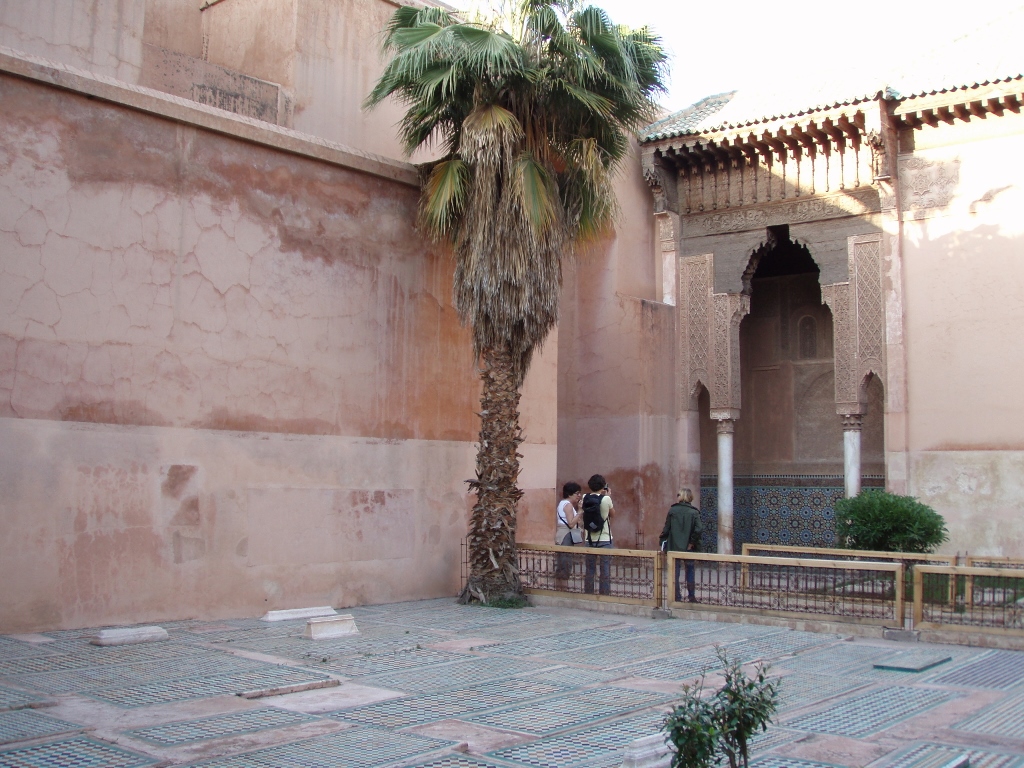 Saadian Tombs
Saadian Tombs
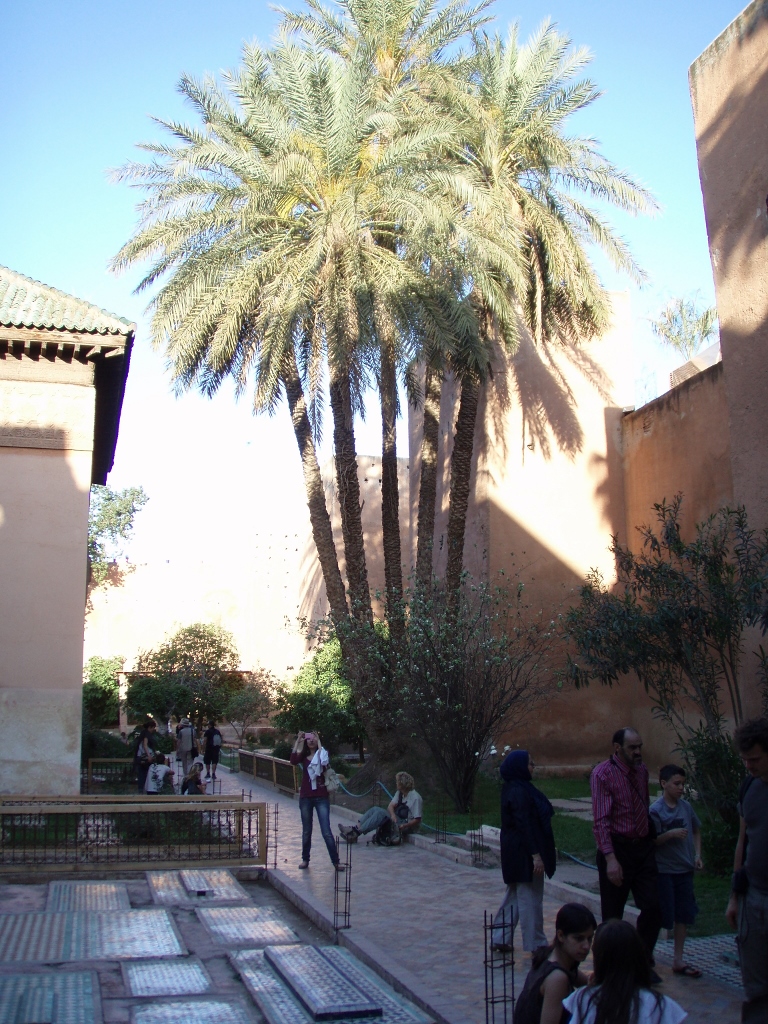 Saadian Tombs
Saadian Tombs
This necropolis was started in the late 16th century by the Saadian Sultan Ahmed al-Mansour, the same ruler who built the El Badi Palace. However, unlike the palace, the necropolis survived, primarily because Sultan Moulay Ismail Ibn Sharif was superstitious and therefore didn’t destroy the tombs, as he did with the palace. He merely sealed them off, which allowed them to survive to the present day and they have even been restored in the meantime.
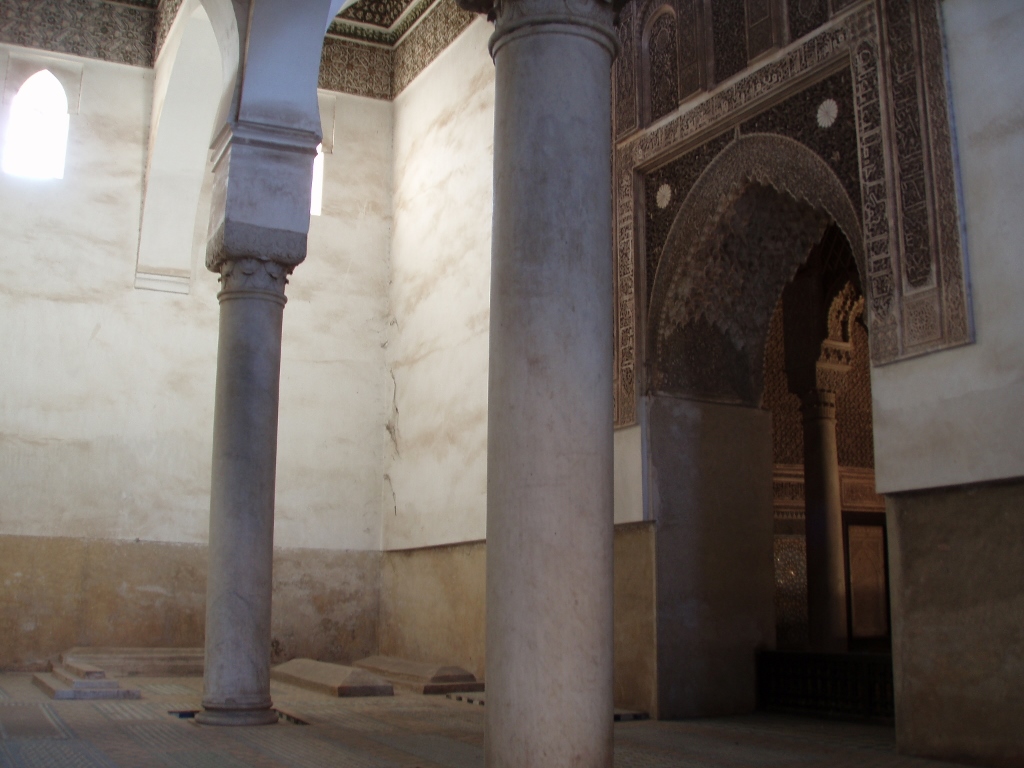 Saadian Tombs
Saadian Tombs
 Saadian Tombs
Saadian Tombs
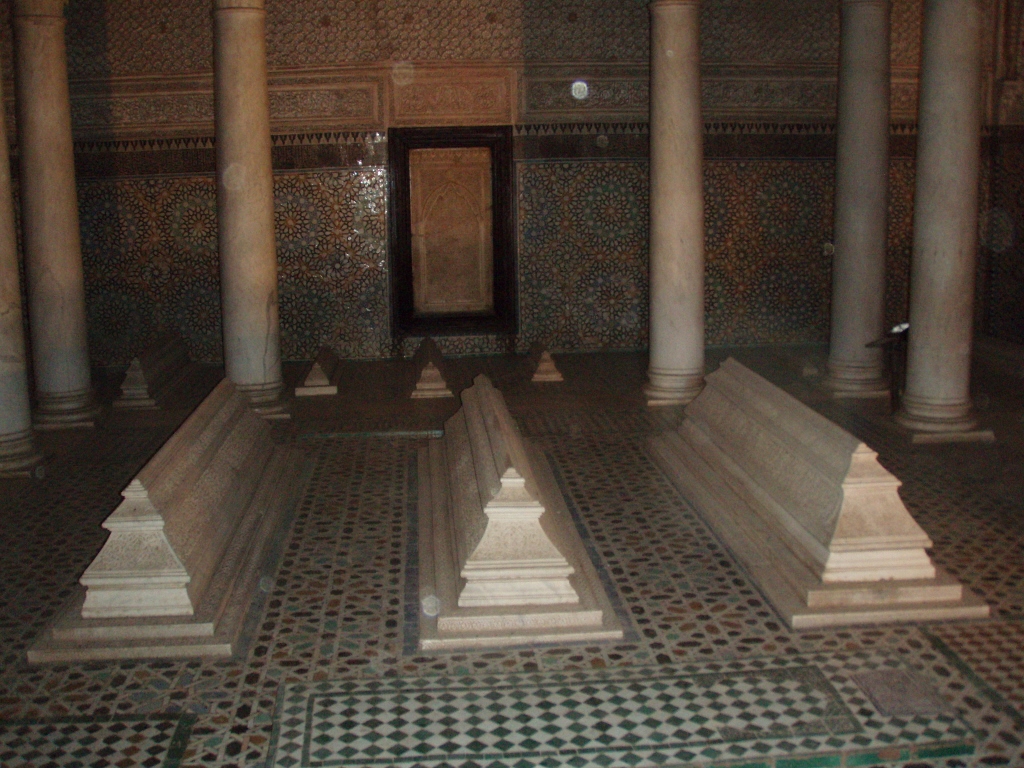 Saadian Tombs
Saadian Tombs
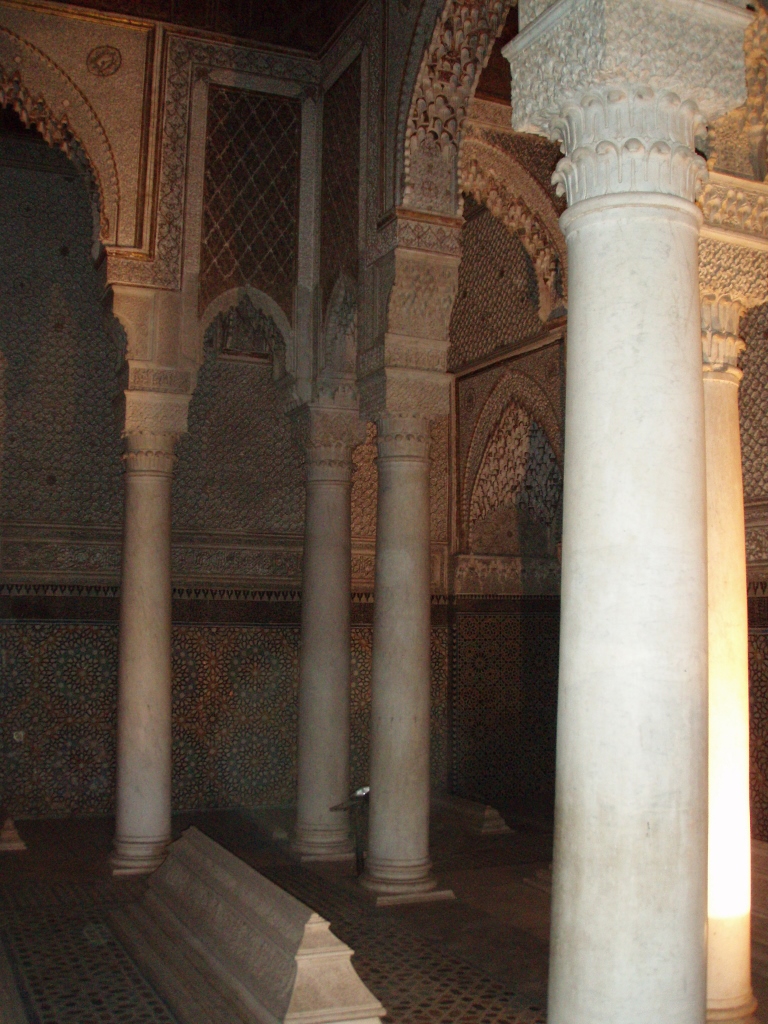 Saadian Tombs
Saadian Tombs
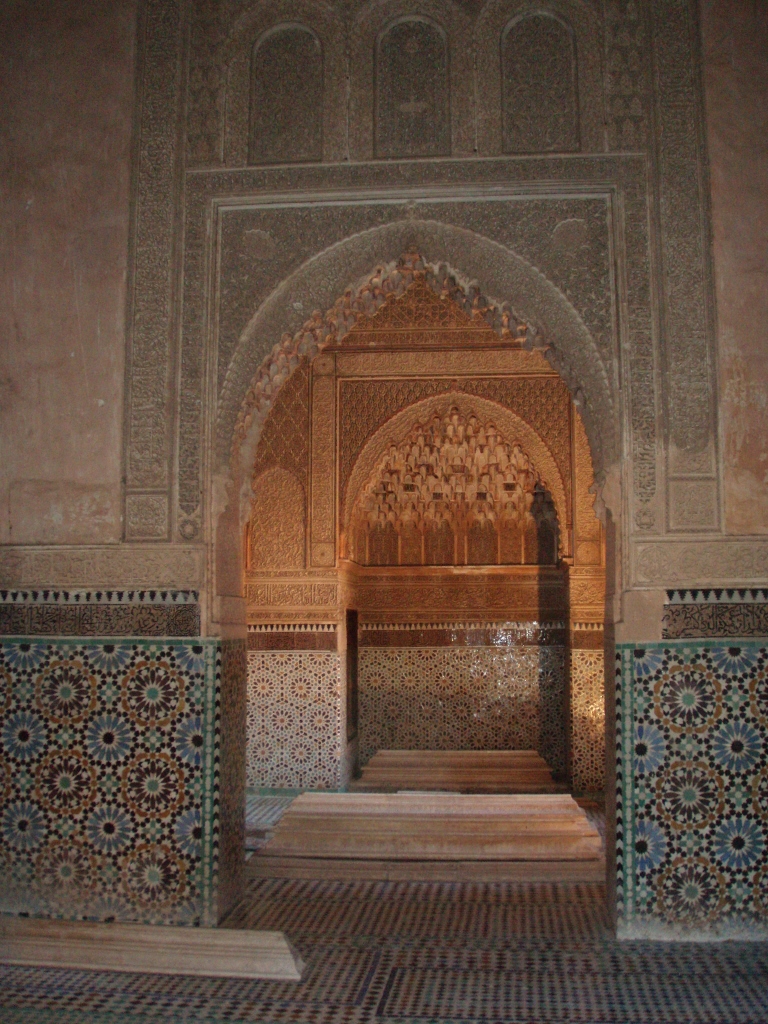 Saadian Tombs
Saadian Tombs
The tombs are divided between those housed within three smaller buildings and those located in the inner courtyard. The buildings contain the remains of 66 members of the Saadi dynasty, including Sultan Ahmed al-Mansour himself, while more than 100 tombs are found outdoors.
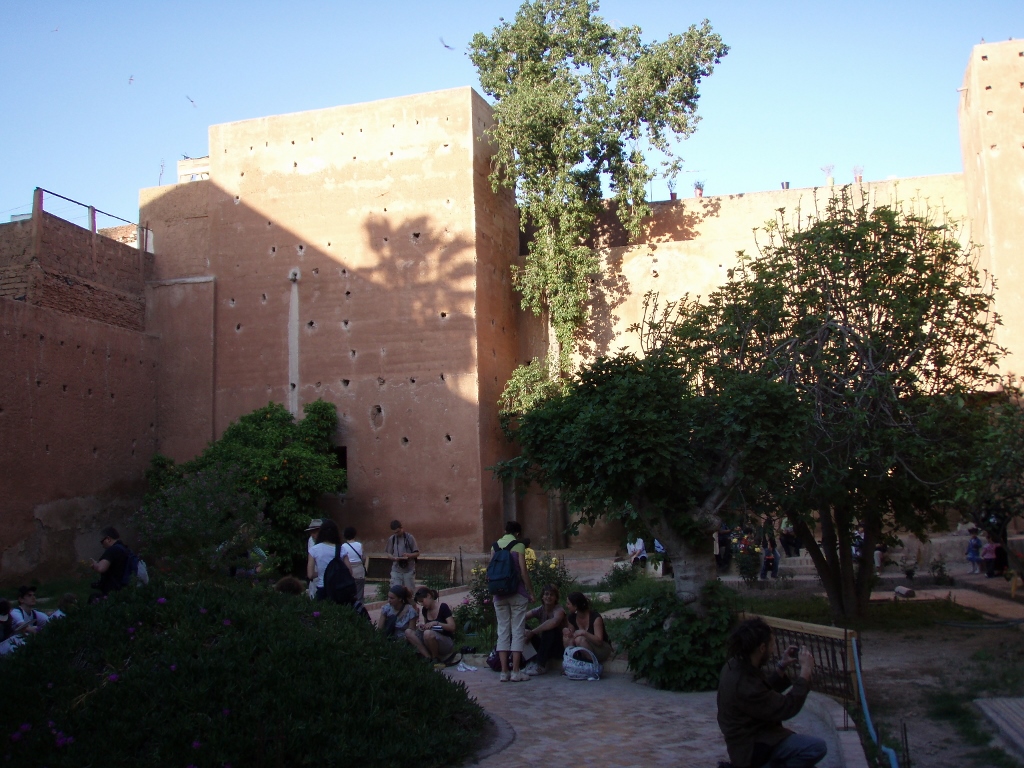 Saadian Tombs
Saadian Tombs
I was here in the late afternoon, with the sun nearing the western horizon. This meant that the red colour of the walls stood out even more vividly.
 Saadian Tombs
Saadian Tombs
 Saadian Tombs
Saadian Tombs
When you see the exceptional craftsmanship and artistry invested in the construction of these tombs, you can only imagine how beautiful the El Badi Palace must have been.
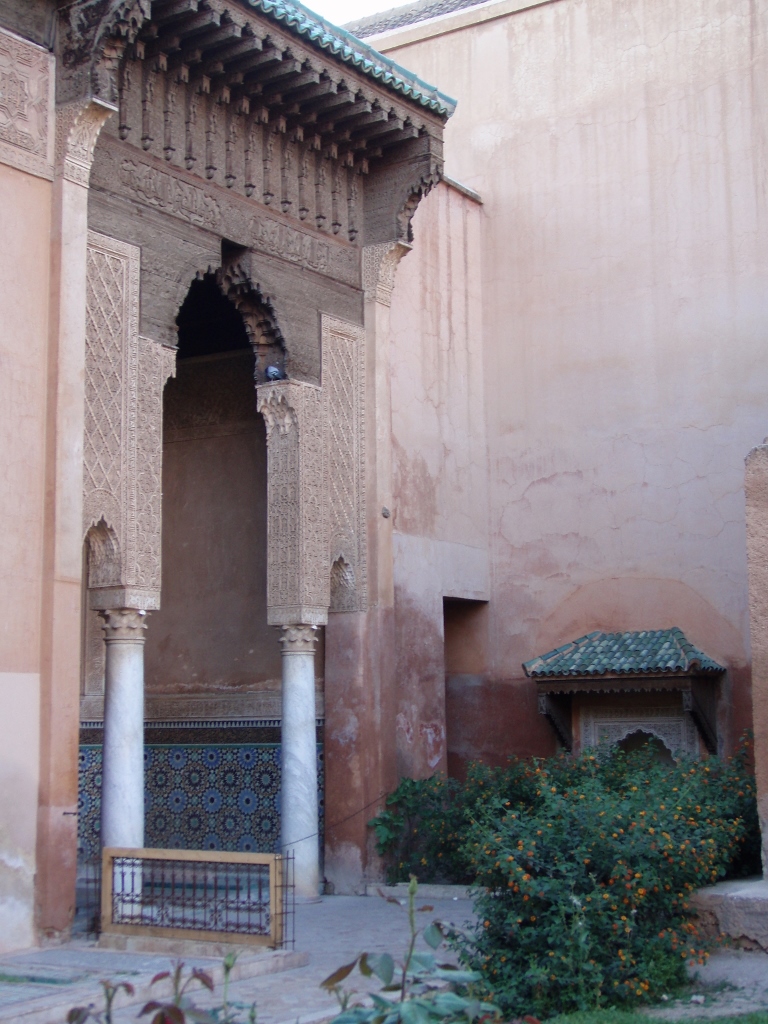 Saadian Tombs
Saadian Tombs
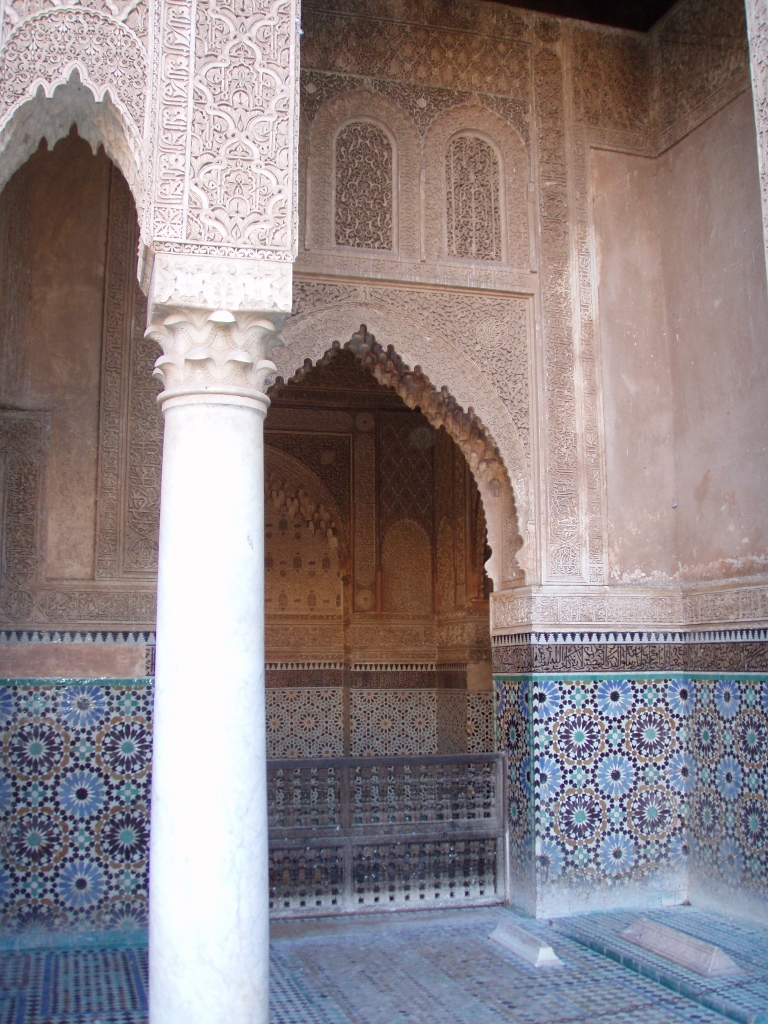 Saadian Tombs
Saadian Tombs
To reach the necropolis from the Kasbah Mosque, you have to walk through a narrow passageway between high walls, and at the end of the visit, I returned to the mosque following that same path. Along the way, I also took a couple of photos of some decorations high up on the wall within that narrow passage.
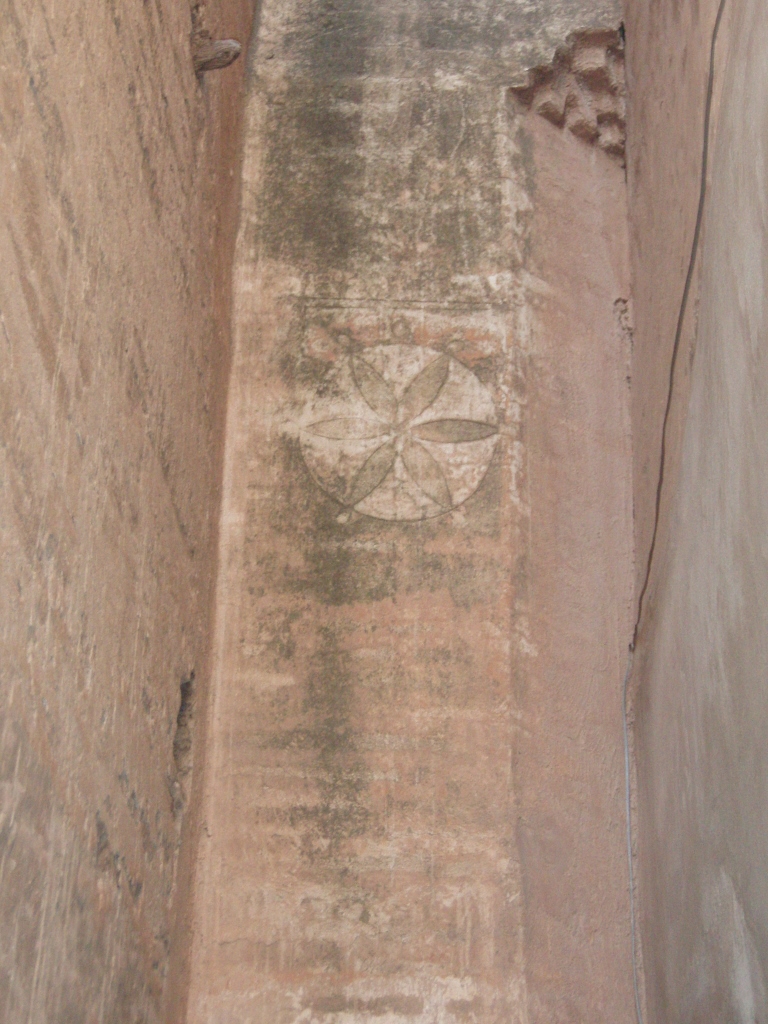 Marrakesh, a detail
Marrakesh, a detail
And then I reached the front part of the mosque, where there are also spots for selling souvenirs.
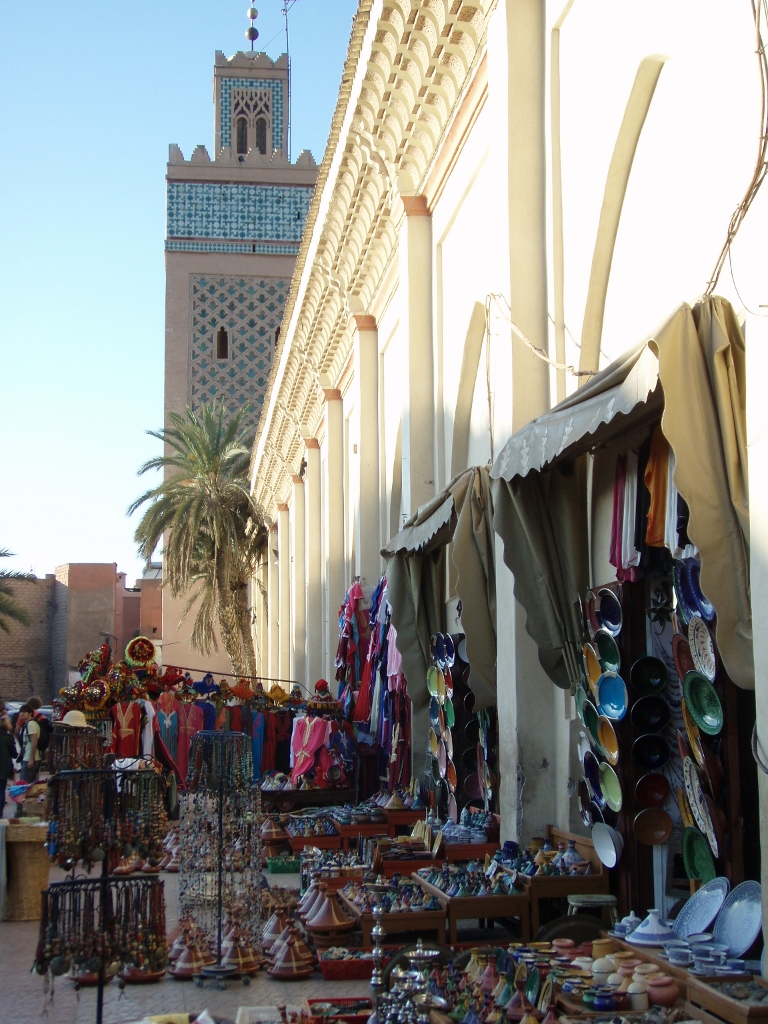 Marrakesh, a detail
Marrakesh, a detail
After this, I went to the CTM coach station where I bought a ticket to Essaouira for the next day. I have to admit I liked the idea of travelling by a better coach and, even more so, of arriving at a destination before 6 in the evening. Moreover, the schedule showed that I would reach Essaouira around 4 p.m., which I really liked.
By the time I finished all that, it was already getting dark, so I returned to the main square within the Medina of Marrakech, Jemaa el-Fnaa Square. As I have already mentioned, although there are always visitors, food stalls and street performers of all kinds here, the square becomes especially lively in the evening.
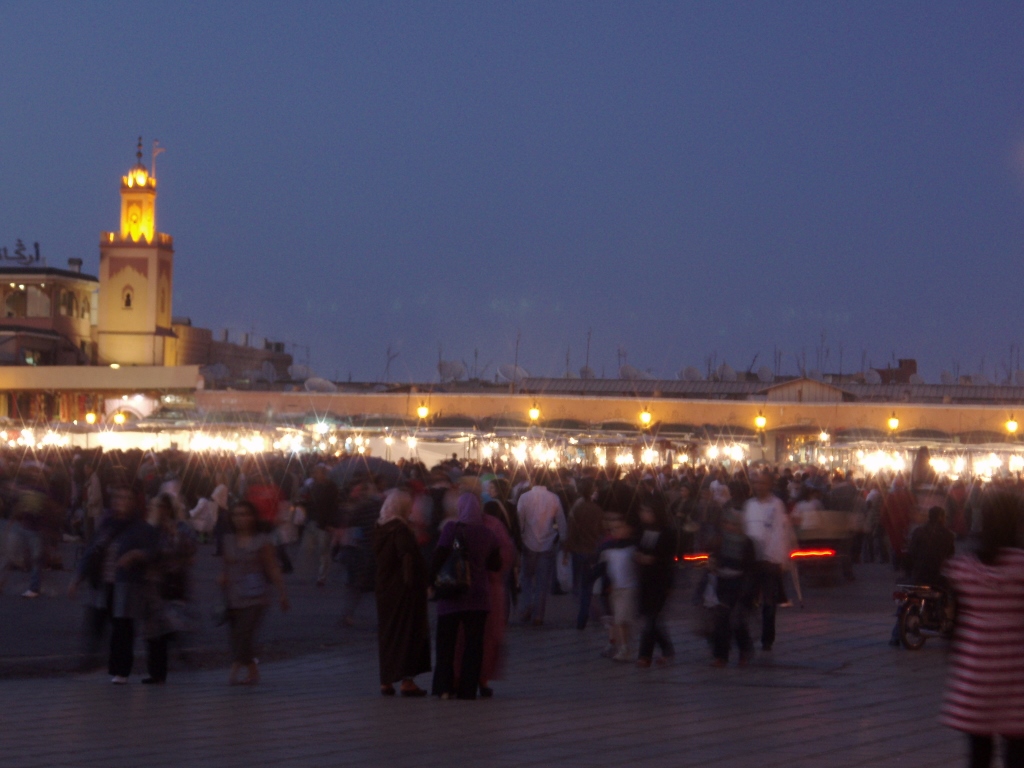 Marrakesh, a detail
Marrakesh, a detail
 Marrakesh, a detail
Marrakesh, a detail
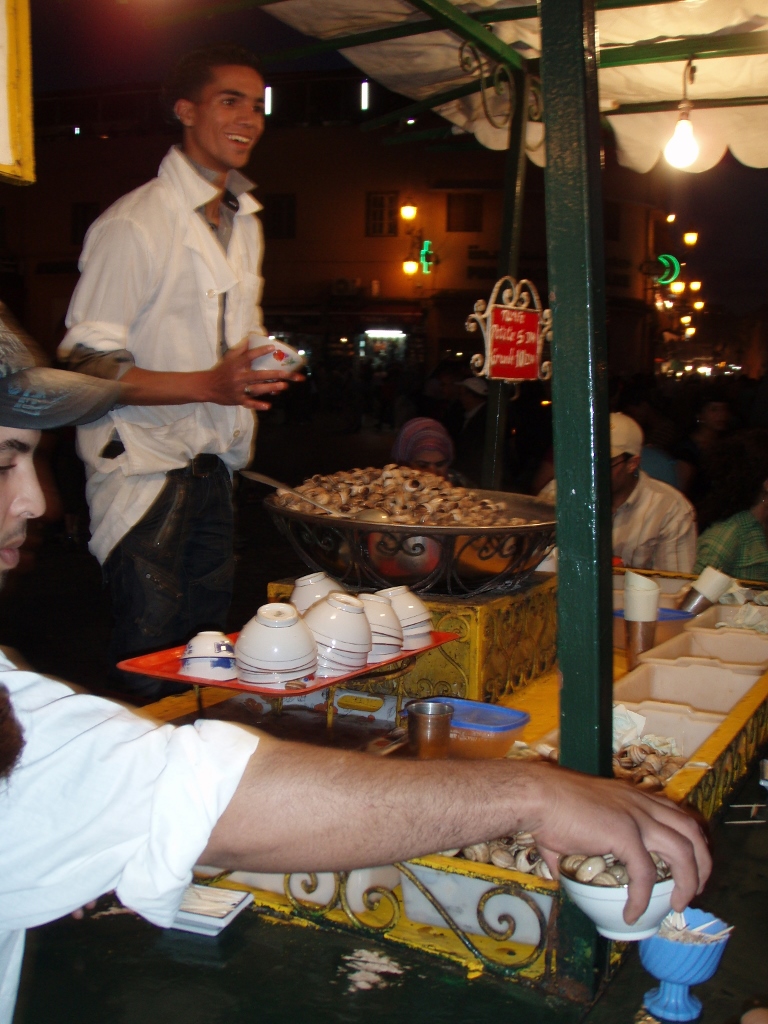 Marrakesh, a detail
Marrakesh, a detail
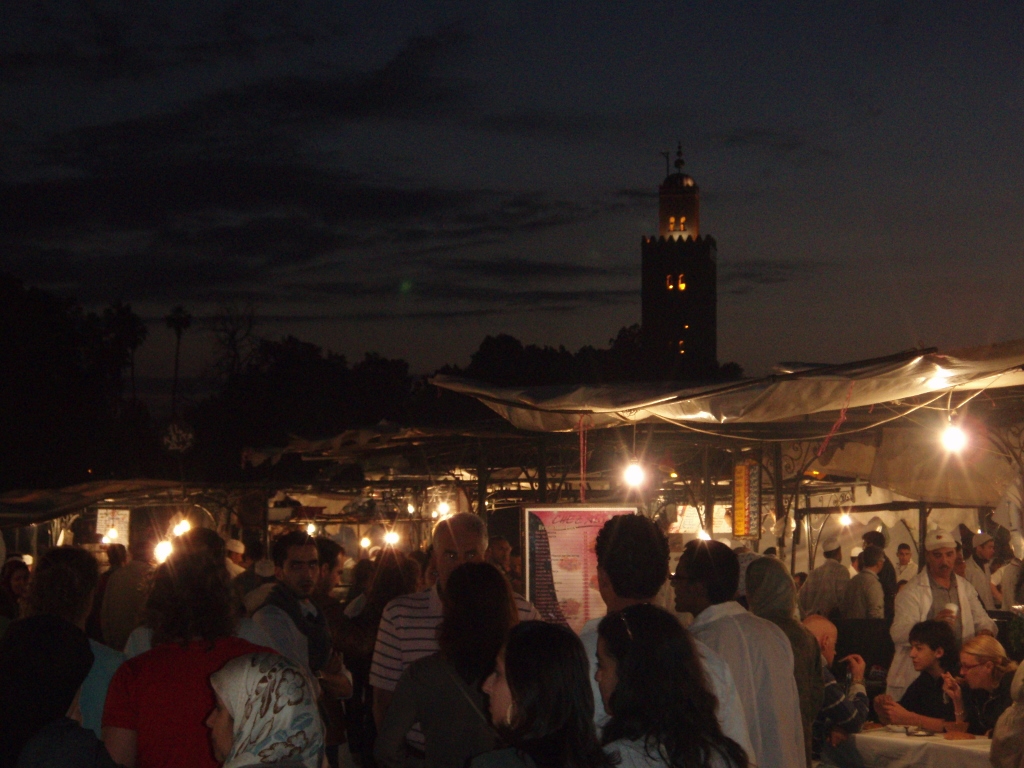 Marrakesh, a detail
Marrakesh, a detail
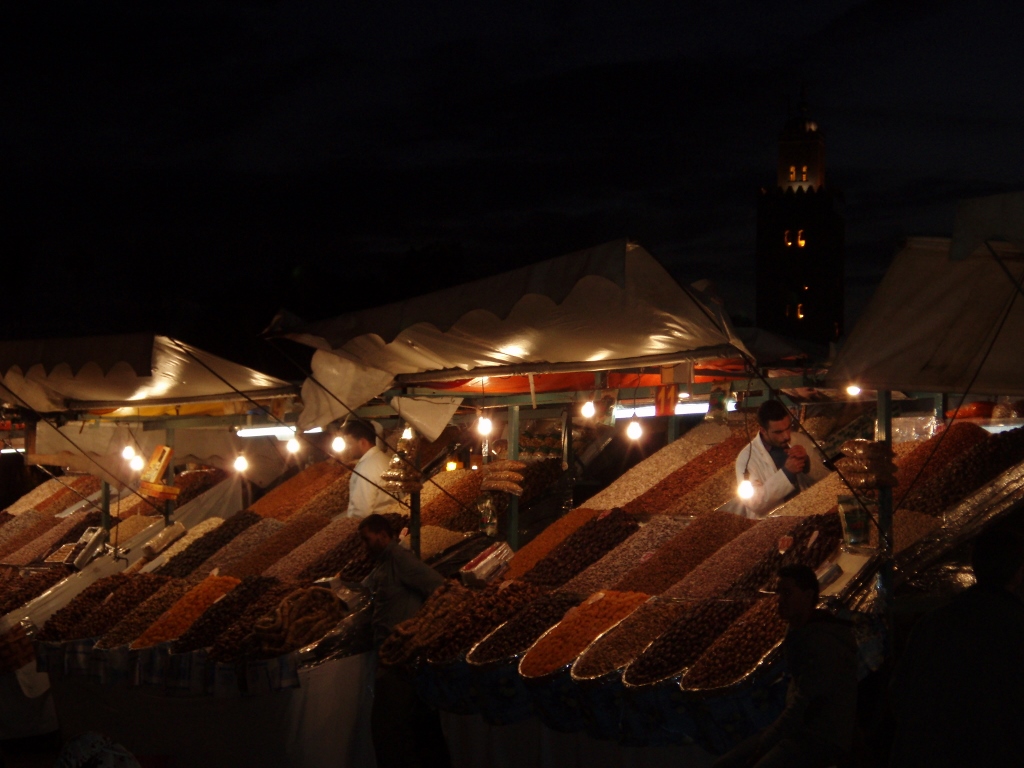 Marrakesh, a detail
Marrakesh, a detail
It was very lively and fun, so I walked around a bit, but then I decided to slowly head back to the hotel. On the way, I passed by the Koutoubia Mosque again.
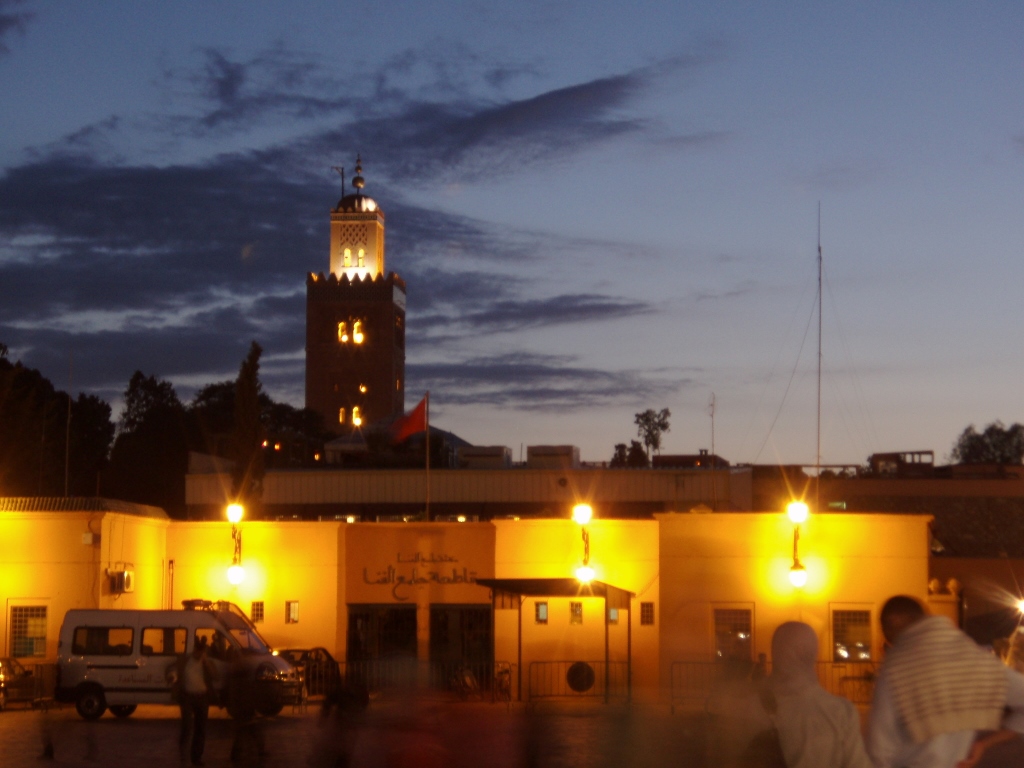 Marrakesh, a detail
Marrakesh, a detail
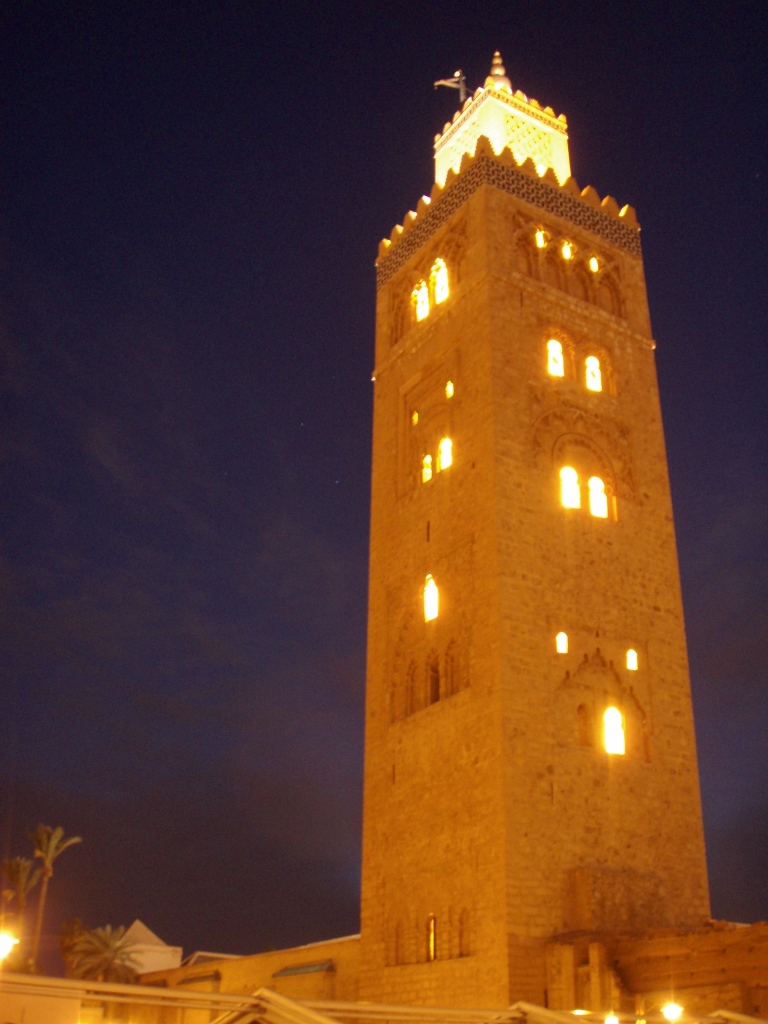 Marrakesh, a detail
Marrakesh, a detail
The next day, I left Marrakech only around noon, so I used the time before that for relaxed packing and for calmly sitting in a café, outdoors in the garden. I had already mentioned that women sitting outside, in the open air, is not common in Morocco, and so far I could do that only in Marrakech, so I took advantage of the opportunity.
I also stopped by an internet café, and then I finally took my things and headed to the coach station. By then, I was experienced enough to know I needed to check my luggage before the coach departure, so I took a seat at the station’s bar as well in order to have a coffee.
That day, I travelled to the city of Essaouira on the Atlantic coast and I practically remained along that coast for the rest of my 2010 Morocco trip, gradually moving north and back to Casablanca, from where I flew back to Europe a few days later.
But before I end my story about Marrakech, here is the recipe for the famous Moroccan specialty – bastilla or pastilla, the Moroccan meat pie. It was traditionally made with pigeon meat, but today it is made with chicken, as my recipe says. No one should be confused (as I was) by the fact that powdered sugar and cinnamon are sprinkled over the finished pie – the pie is savoury, while the mix of spices and flavours makes it absolutely fantastic!
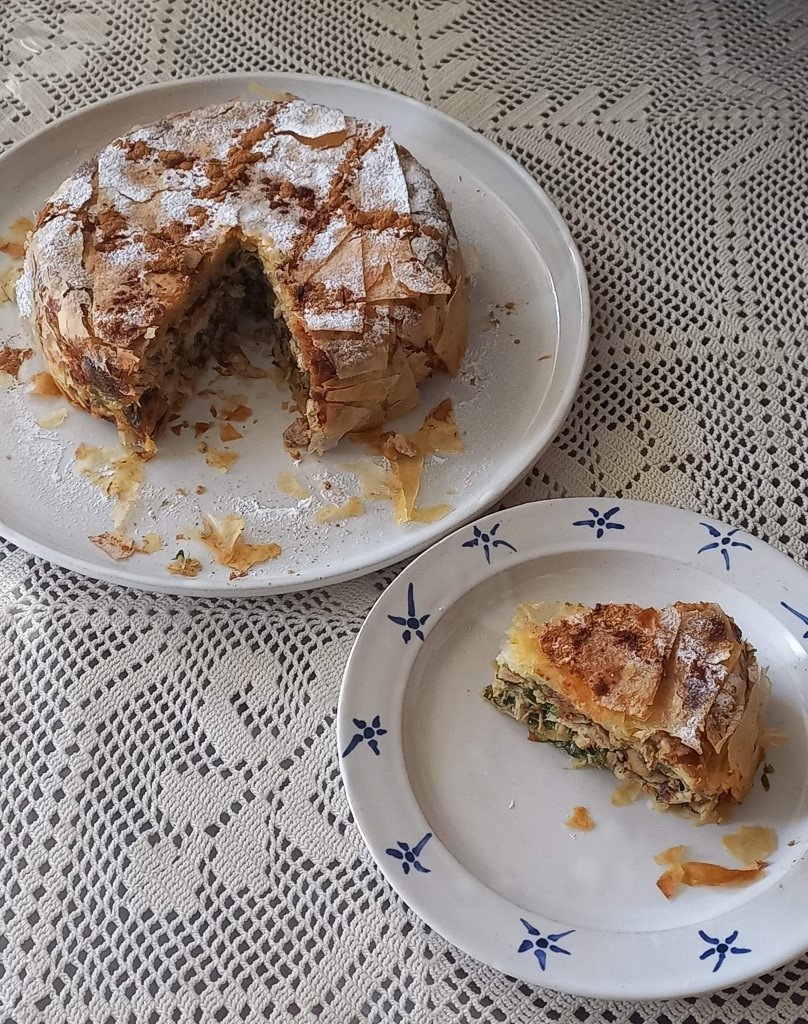 My version of bastilla served in the dishes I have made myself
My version of bastilla served in the dishes I have made myself
BASTILLA/PASTILLA
- 1 kg chicken drumsticks and thighs
- 1 large onion
- 2 cloves of garlic
- 50 g toasted peeled almonds
- 50 g pitted dates
- a bunch of parsley
- 3 eggs
- 10 sheets of thin phyllo dough
Salt and pepper the chicken, then fry it in a large pan with olive oil (or butter) until browned on both sides. Remove the chicken from the pan and set aside.
In the same pan, add chopped onion and garlic, and if needed, a bit more oil. Salt and sauté until softened.
Add about 180 ml of water and spices (2 teaspoons Moroccan Ras El Hanout spice blend, 1 teaspoon ground cinnamon, 1/2 teaspoon ground ginger, 1/2 teaspoon crushed chili, 1/4 teaspoon turmeric). Once it boils, return the chicken to the pan. Cook for about 15 minutes or until the chicken is tender and the liquid is reduced by half.
Remove the chicken and place it on a cutting board. Carefully, so you don’t burn yourself, remove the meat from the bones and shred it into smaller pieces (you can use your fingers or a fork).
Pour the beaten eggs into the remaining liquid in the pan, then add the shredded chicken. Stir to combine, then add the almonds and chopped dates. Mix everything well.
The finishing can be done in two ways – either in the oven or on the stove. I chose the first option. So, grease a baking dish with oil (or melted butter). Fold one thin sheet of phyllo dough in half and place it in the dish so that the edges hang over the sides. Brush the dough with oil or melted butter. Repeat this with another 7 sheets, layering in a circle. Then fill the dish with the meat filling. Fold two more sheets into quarters so they can cover the filling, brushing each layer with oil or melted butter. Finally, fold the overhanging edges of the dough over the center.
Bake at 180°C (356°F) until the dough turns a nice golden brown. Remove and flip onto a serving plate. Sprinkle powdered sugar and cinnamon on top. Traditionally, the pattern resembles the "tic-tac-toe" game grid.
Regarding the journey from Marrakech to Essaouira, the distance is about 180 km, while the coach takes roughly 3.5 hours to cover it. Everything went smoothly and I arrived on time. Along the way, I saw an interesting scene that I wanted to capture – a truck with some people sleeping on its roof.
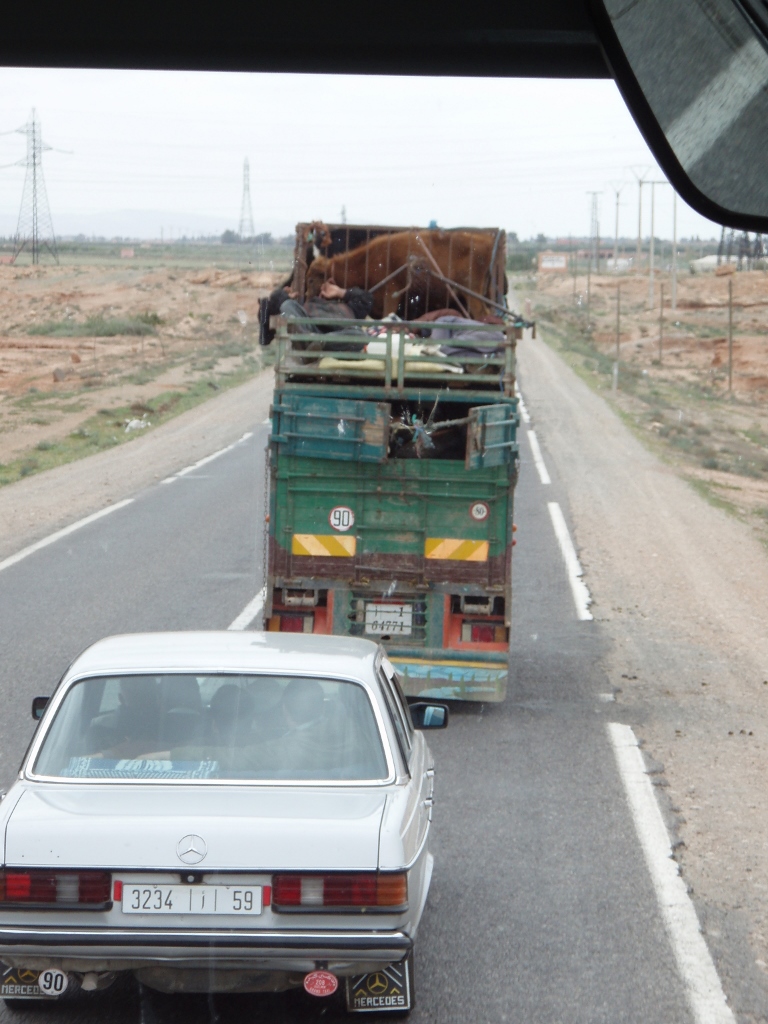 On the road from Marrakesh to Essaouira
On the road from Marrakesh to Essaouira
Essaouira is an incredibly charming city, while its medina is also listed as a UNESCO World Heritage Site. I planned to spend two nights there.
I decided to book a room in a hotel located right inside the medina, but the problem was that taxis don’t operate within the medina. So I had to figure something out because the distance between the coach station and the hotel was about 1 km, and I didn’t want to carry my backpack for 15-20 minutes (at that time I was carrying a lot more stuff than I do now). It turned out to be very simple. Instead of a taxi, I agreed on a price with a local transporter with a cart; my backpack was placed inside and the two of us walked nicely to the hotel. Problem solved.
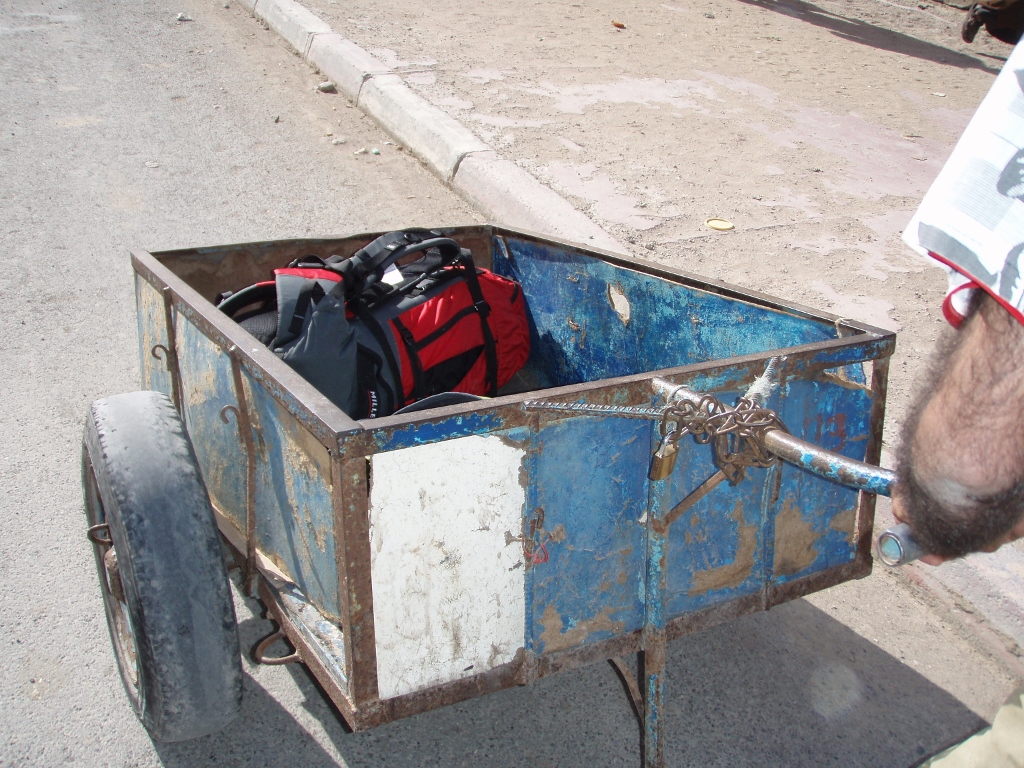 Transportation in Essaouira instead of taxi
Transportation in Essaouira instead of taxi
I’ll write more about Essaouira later, but my first impressions walking through the medina were very positive. The buildings are traditionally white with blue details and this looked exceptionally beautiful.
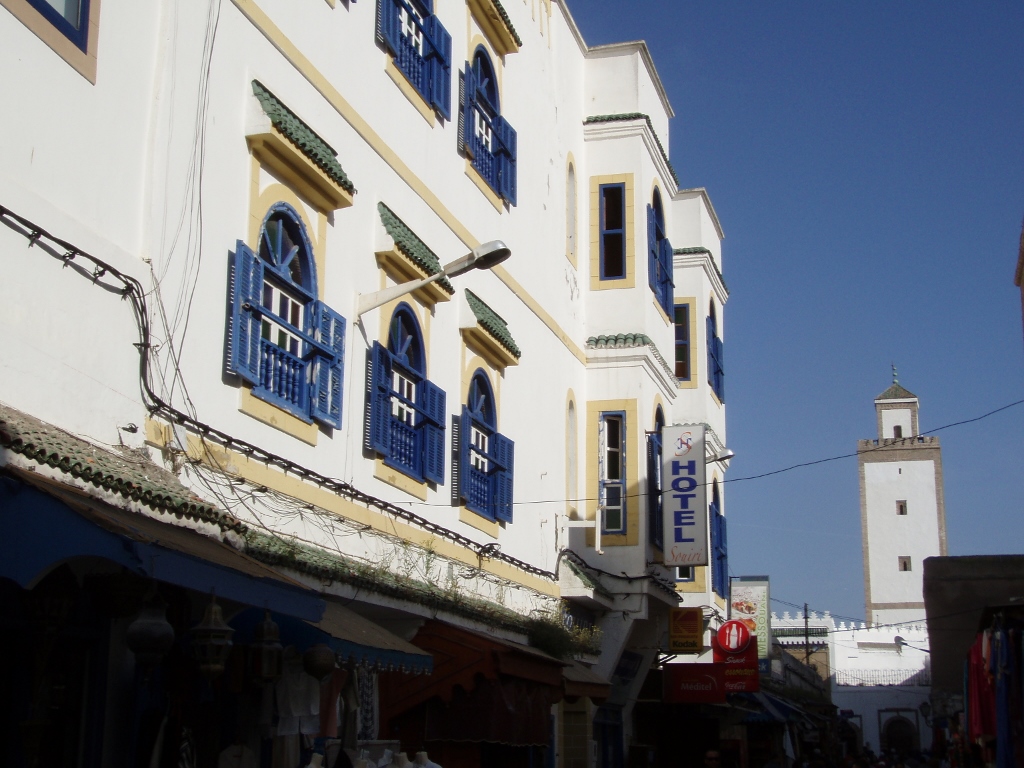 Essaouira, a detail
Essaouira, a detail
Here too, I chose the hotel based on the description in the guidebook, but this was the most charming hotel of the entire trip.
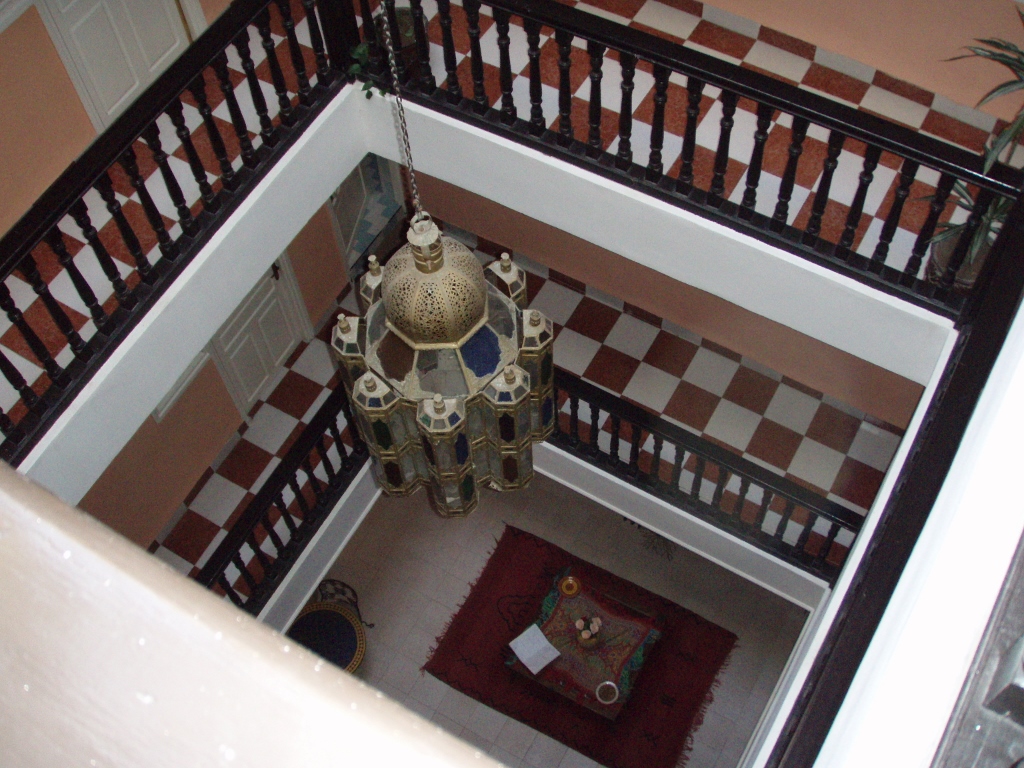 Essaouira, a detail
Essaouira, a detail
What I especially liked was that it had a large rooftop terrace from which I could watch and capture the surroundings.
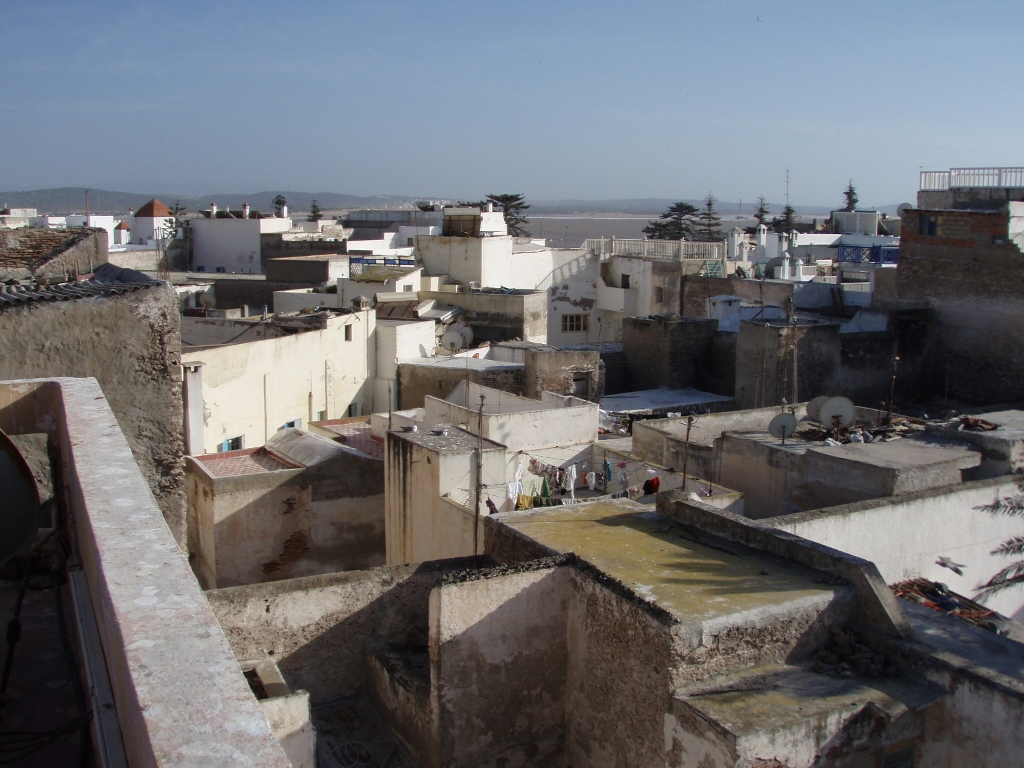 Essaouira, a detail
Essaouira, a detail
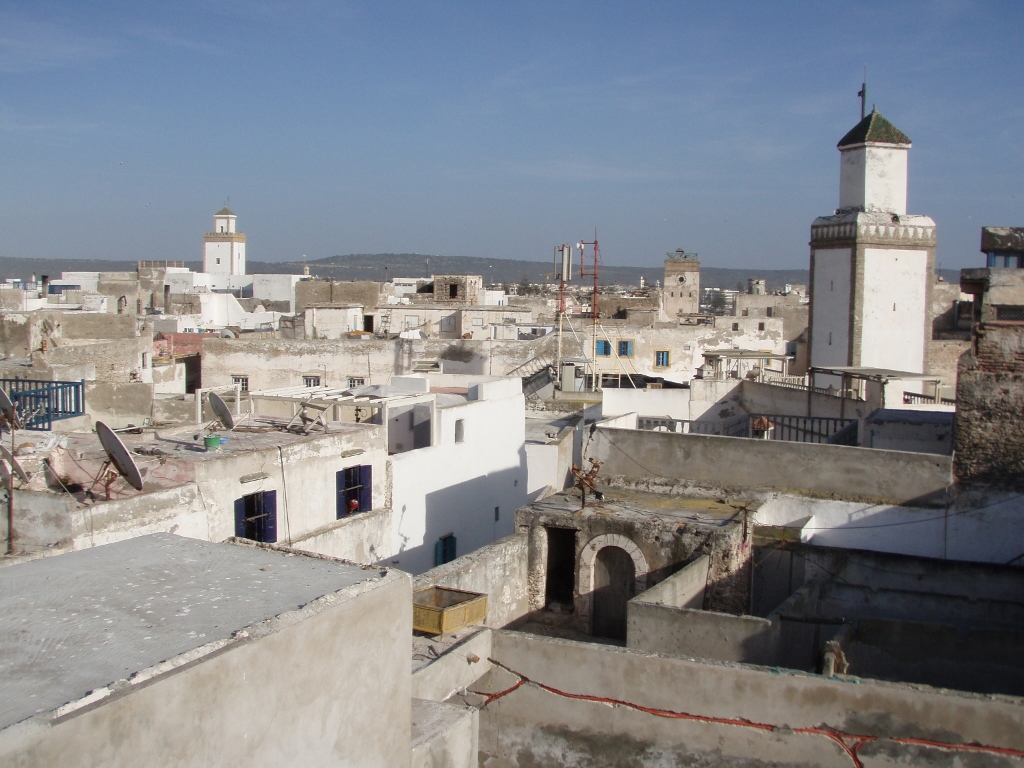 Essaouira, a detail
Essaouira, a detail
After a brief stay on the hotel rooftop, I went down to the streets of Essaouira and started walking around.